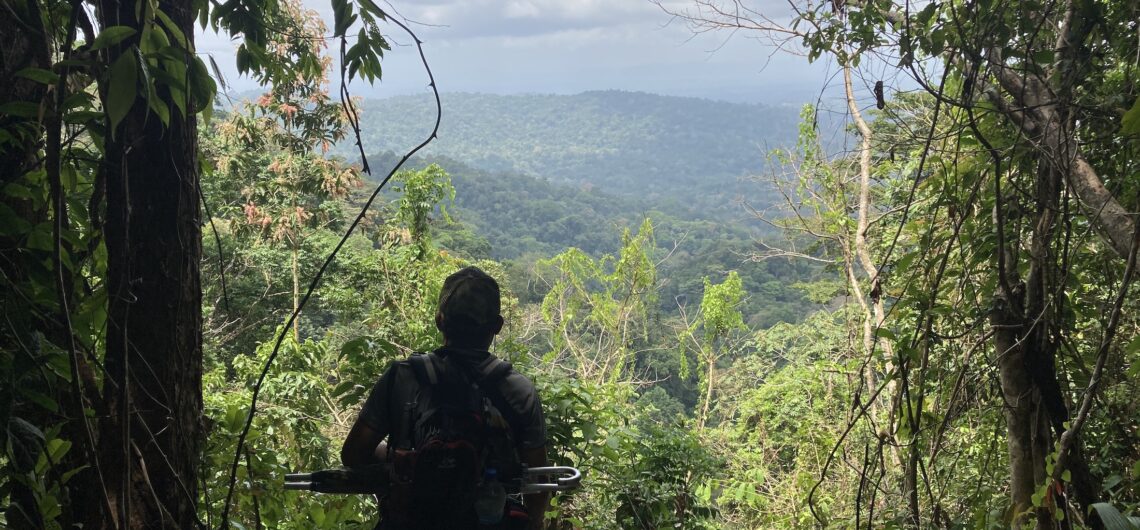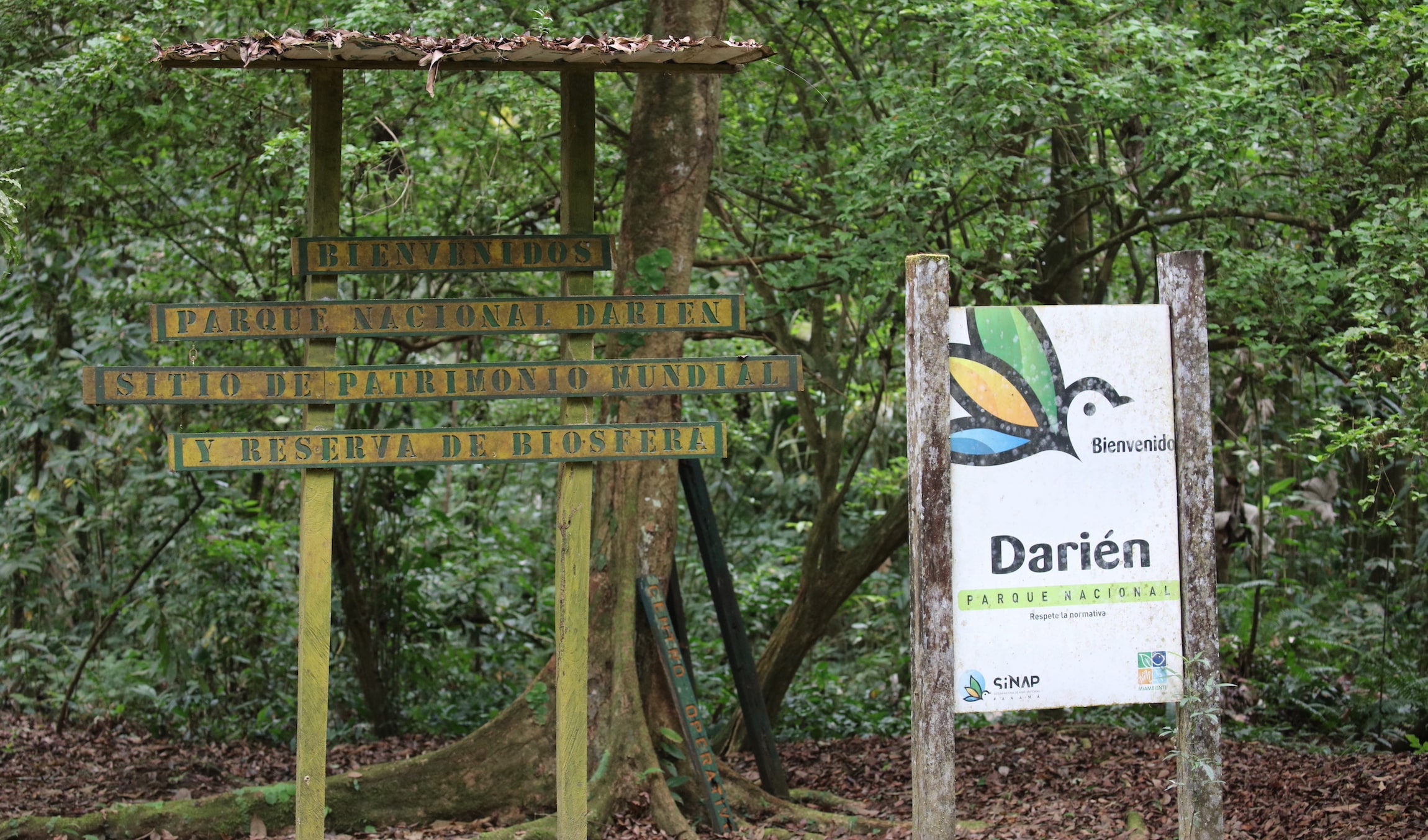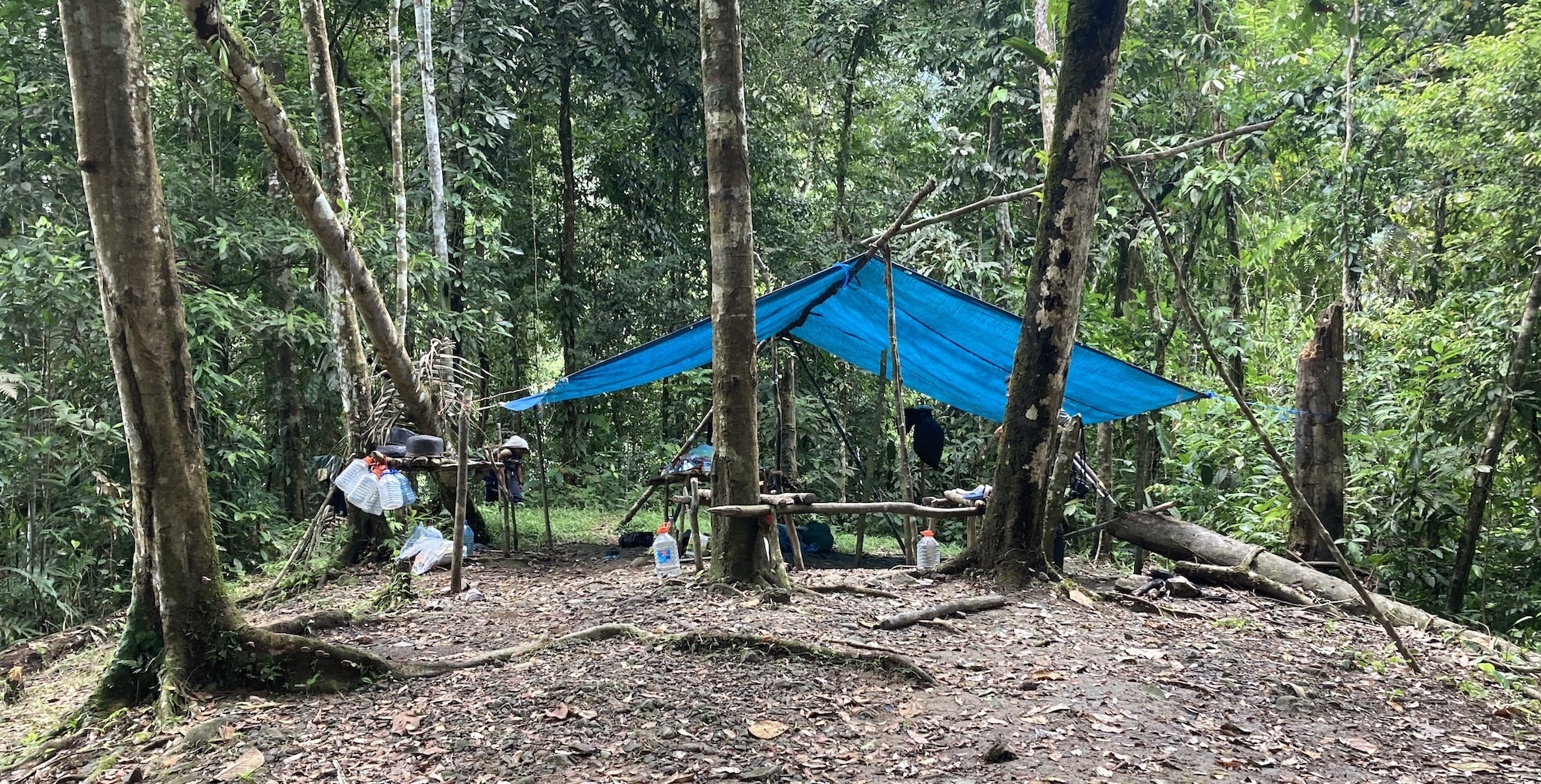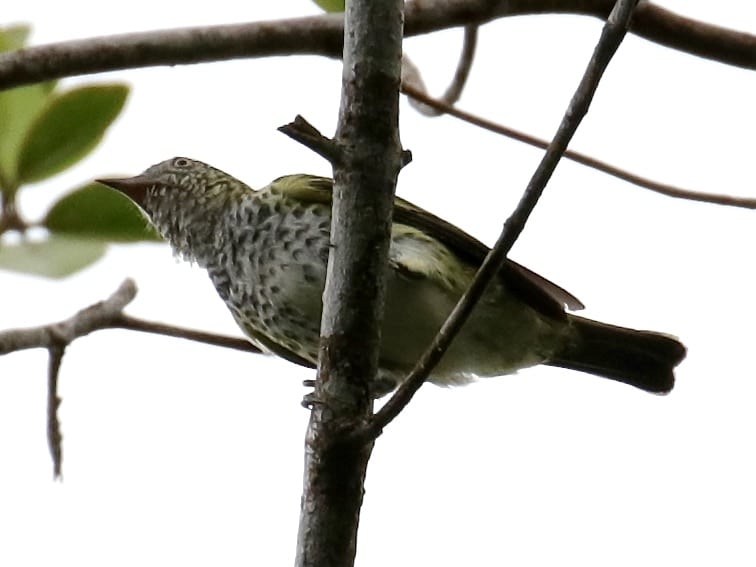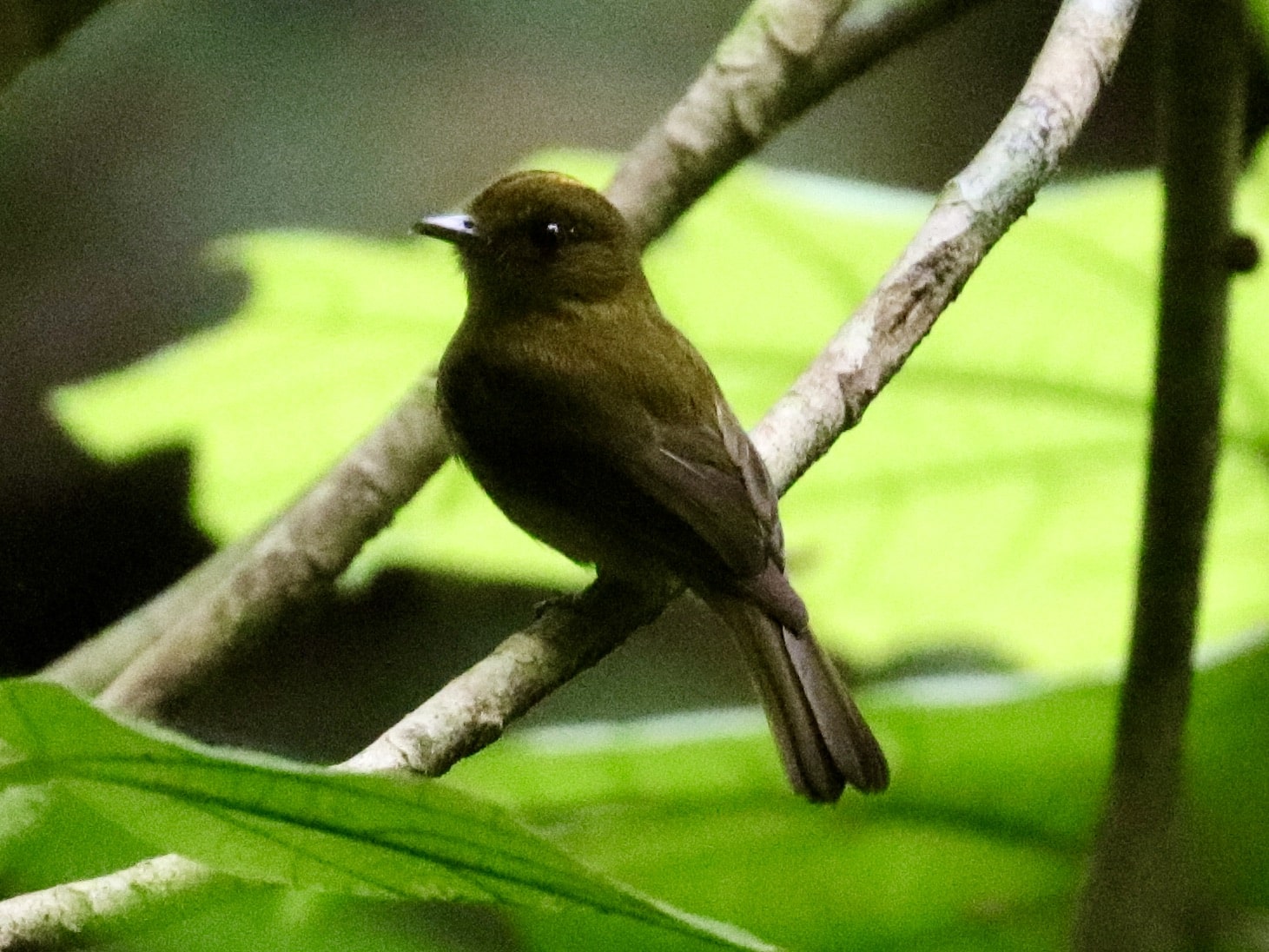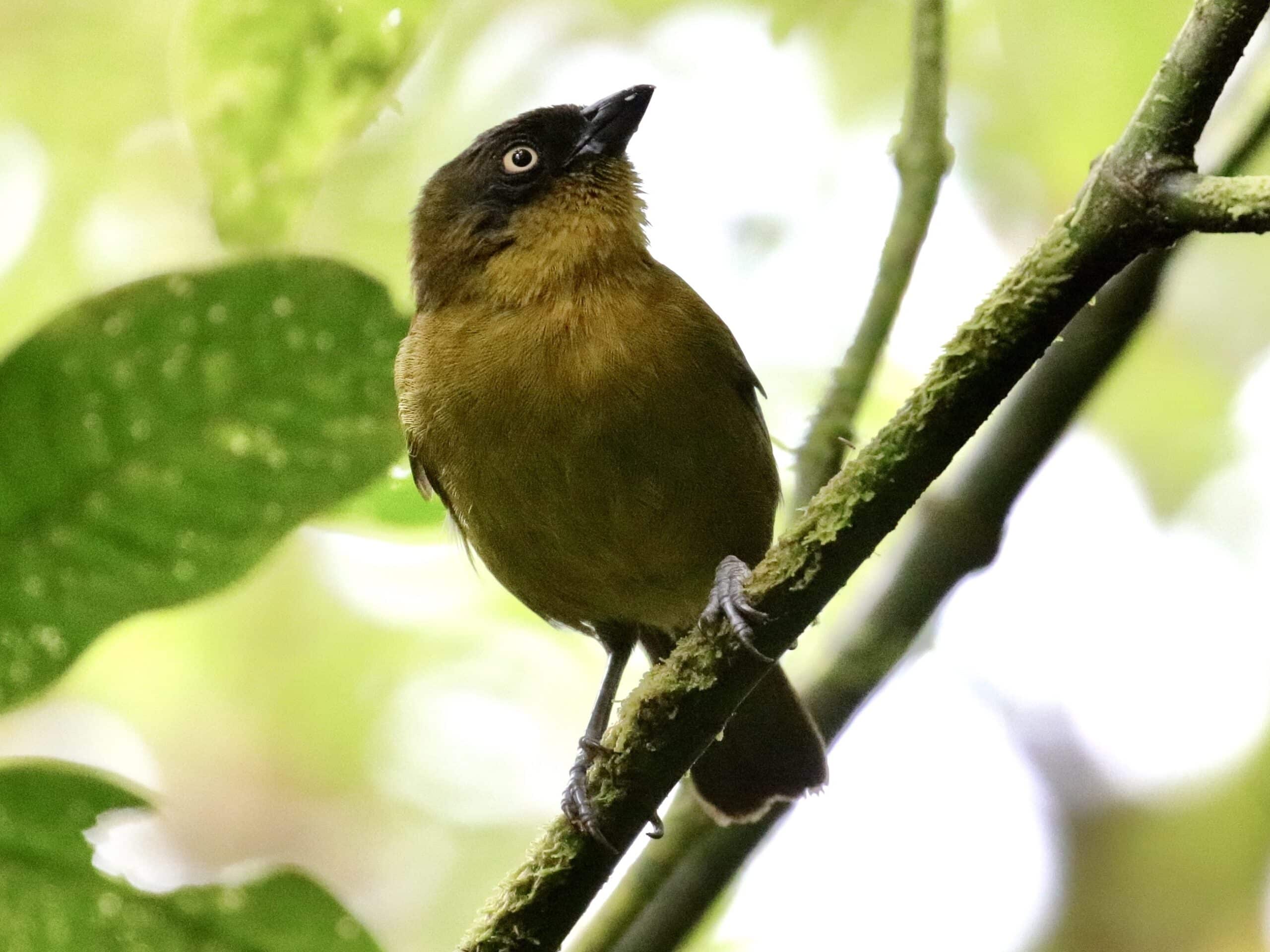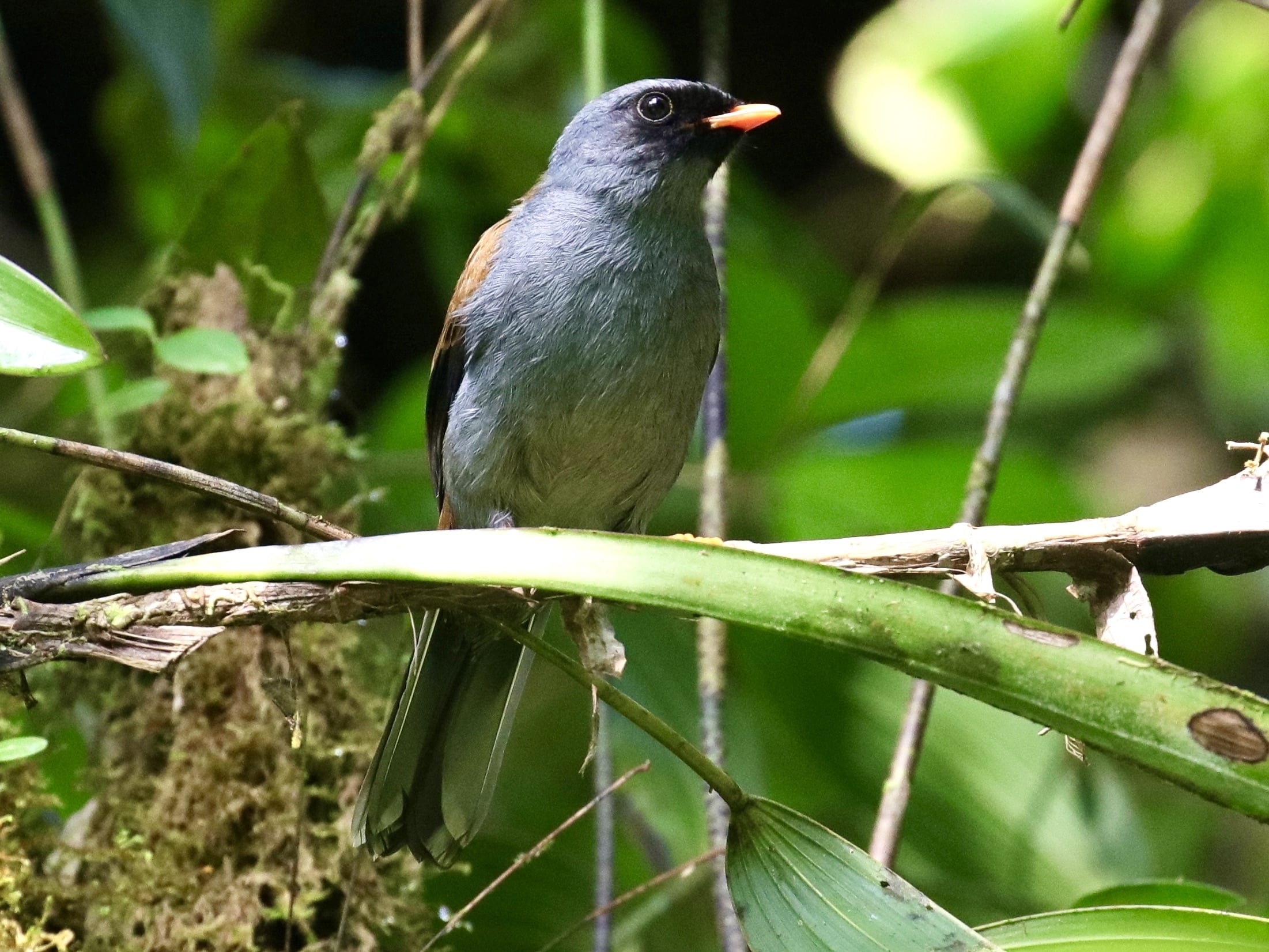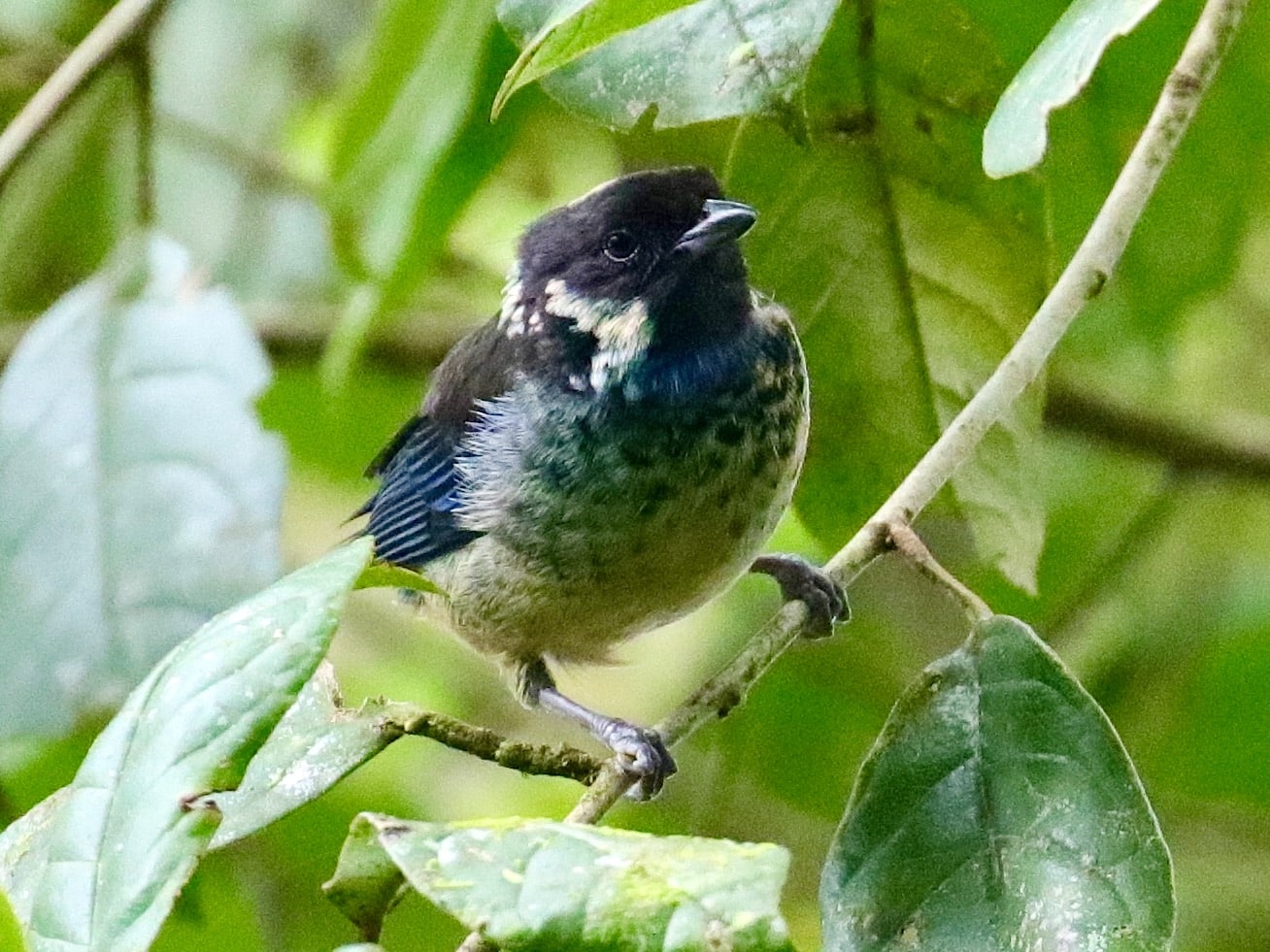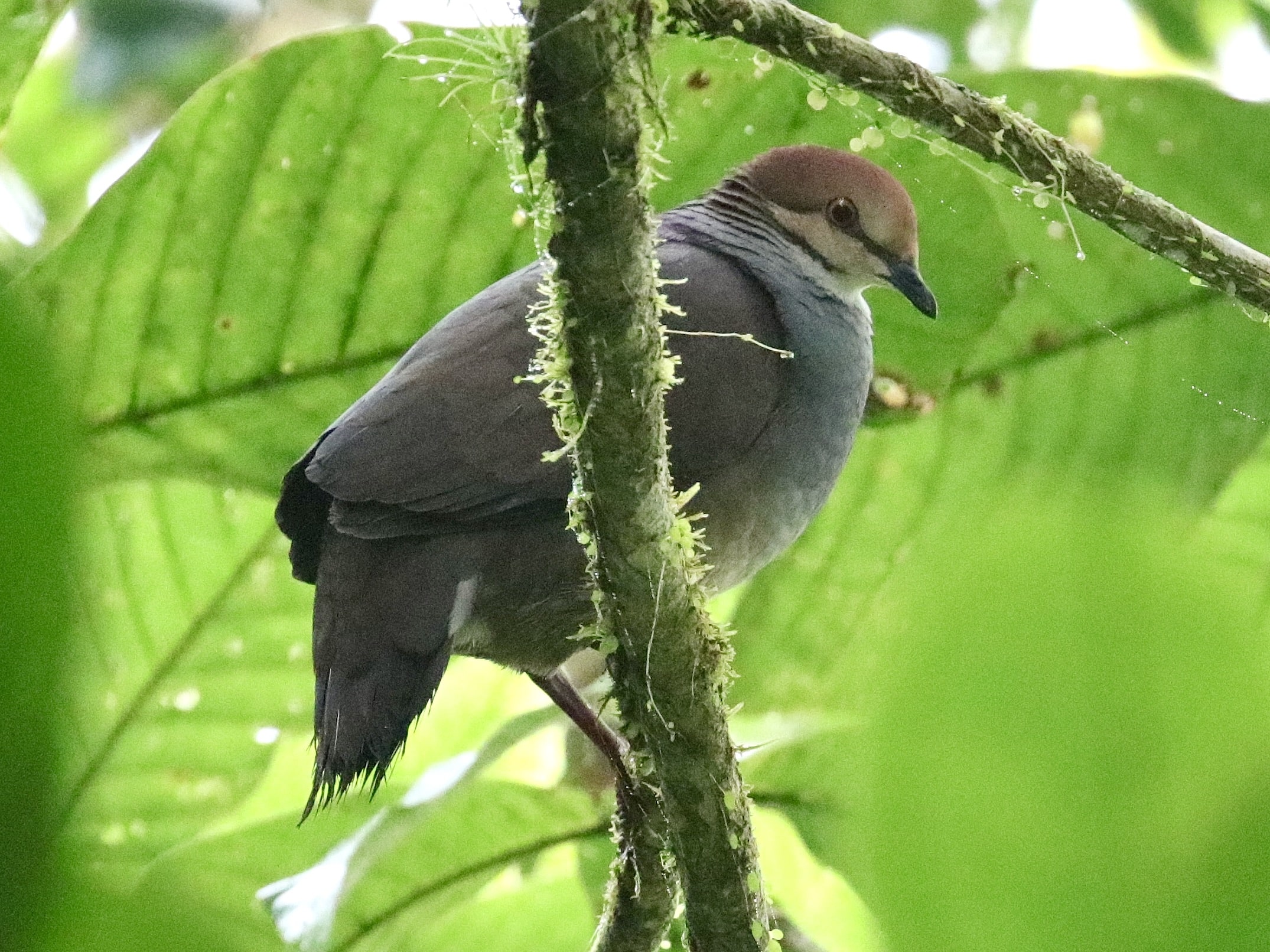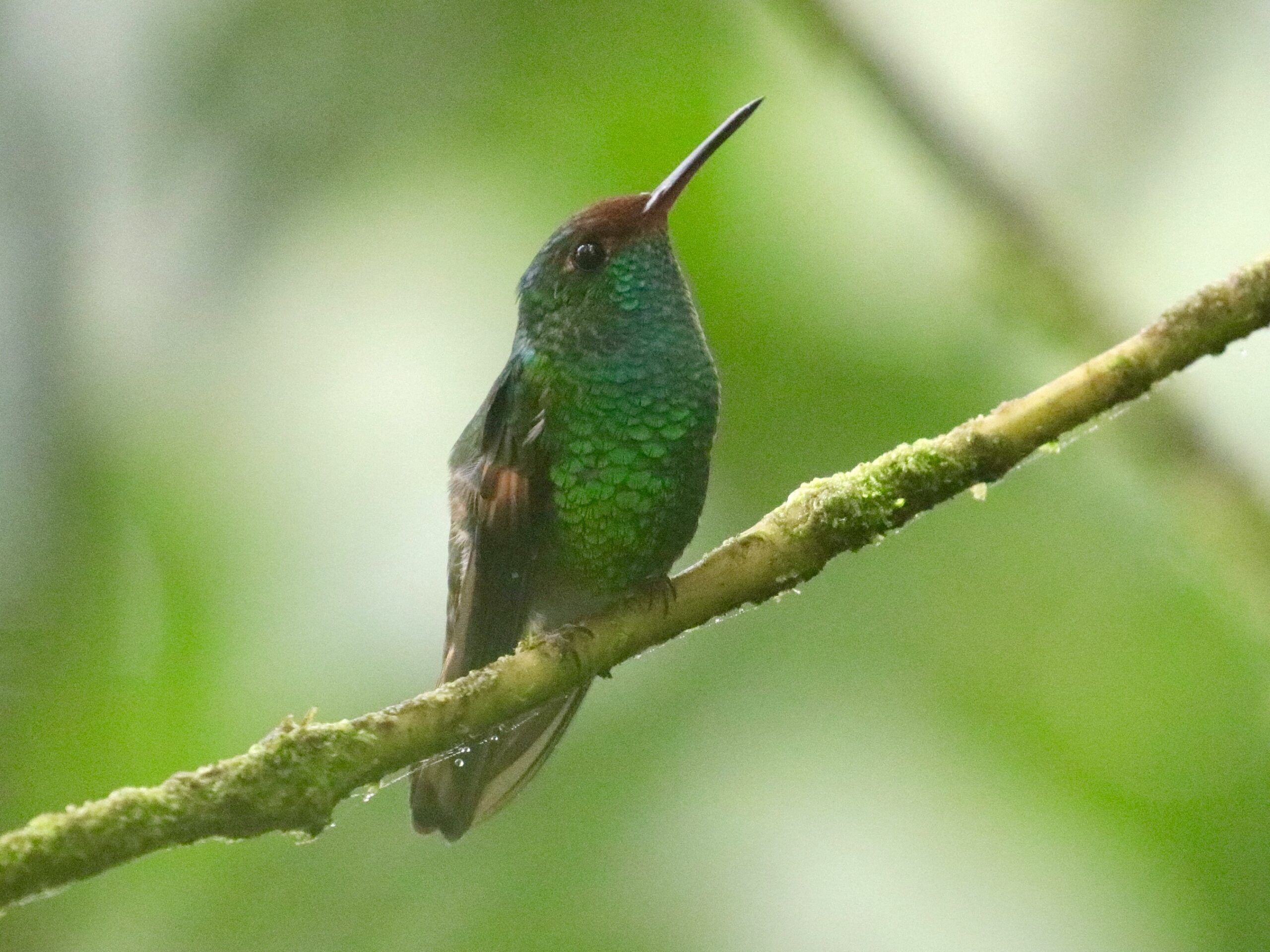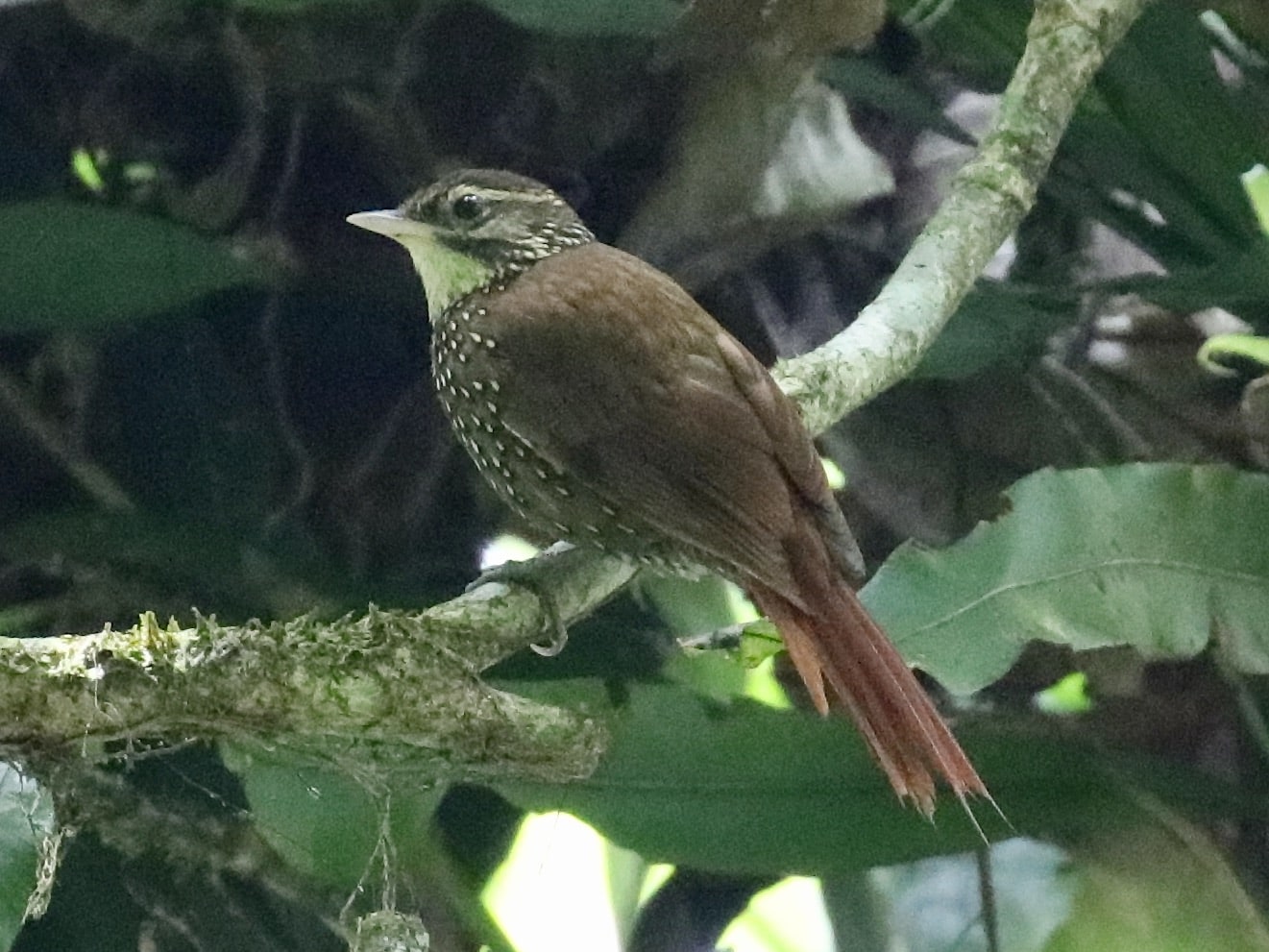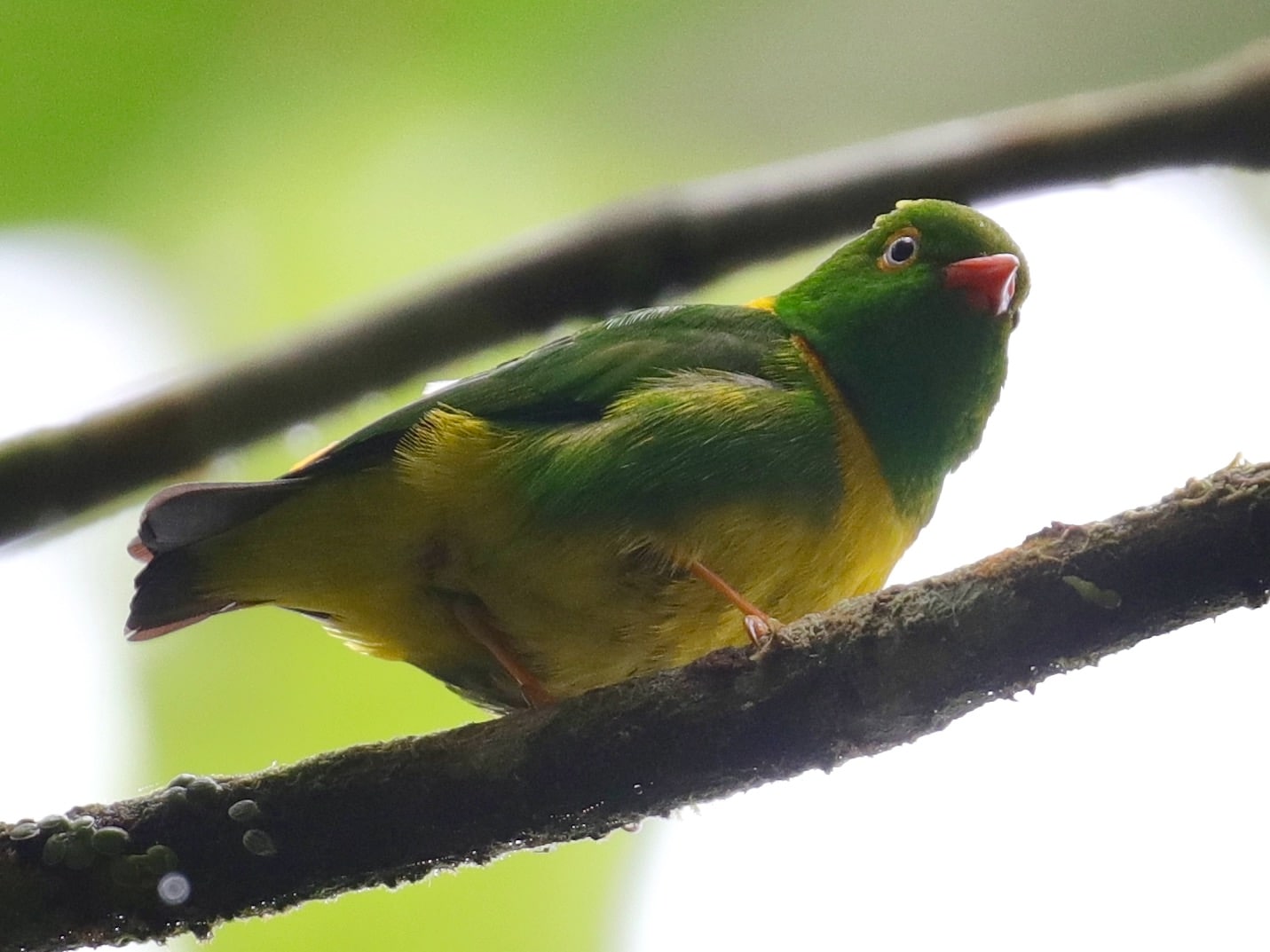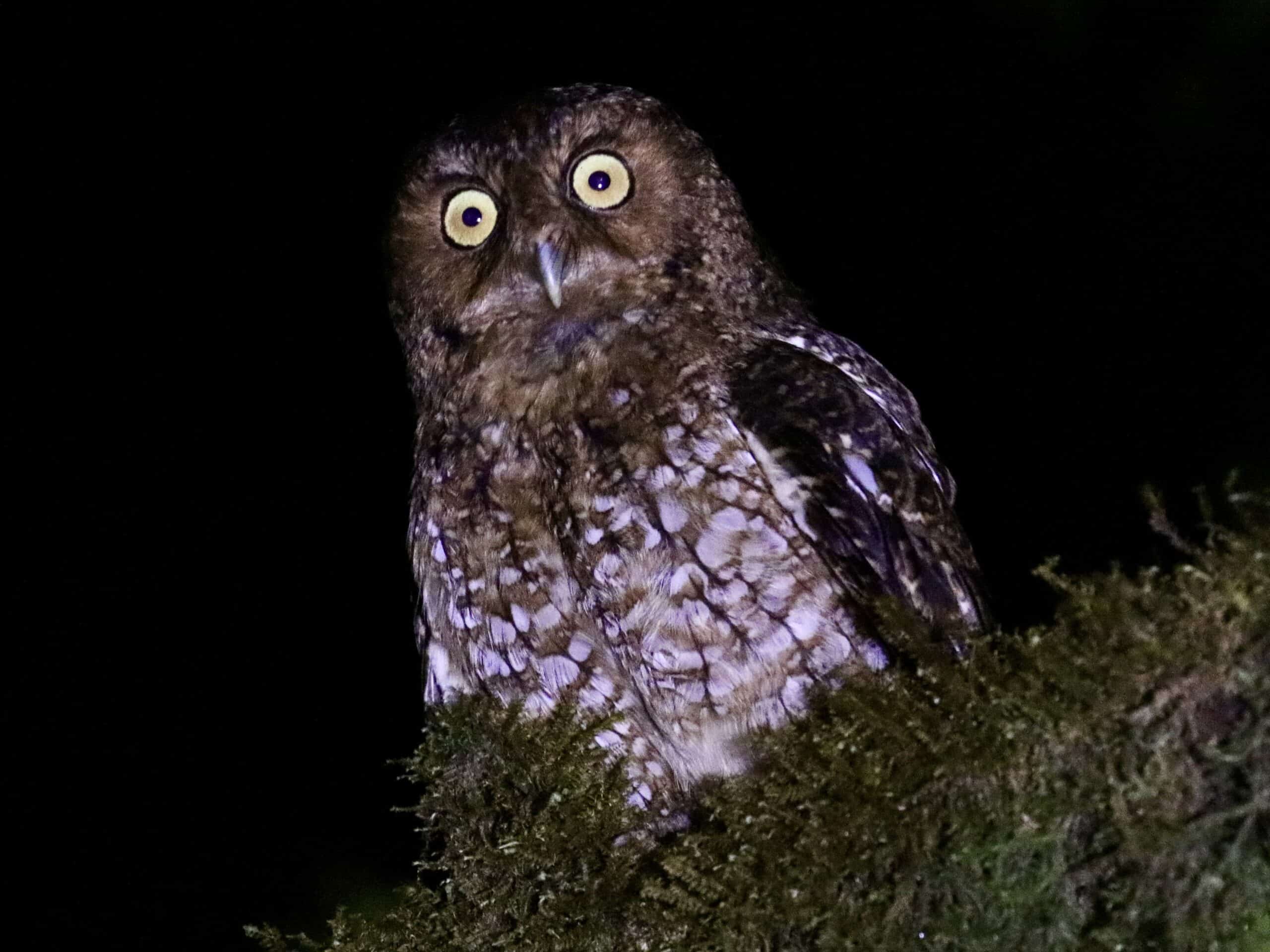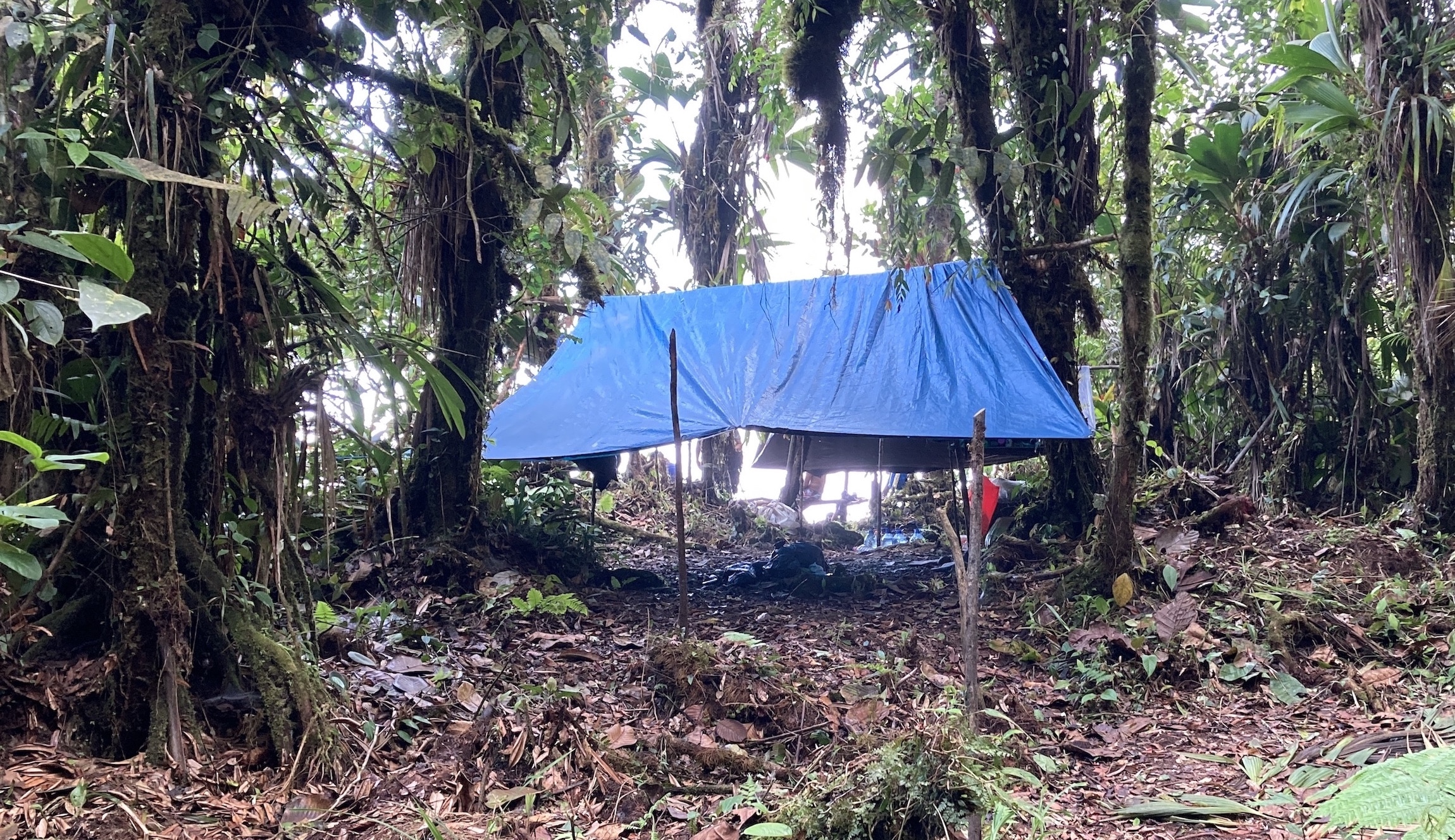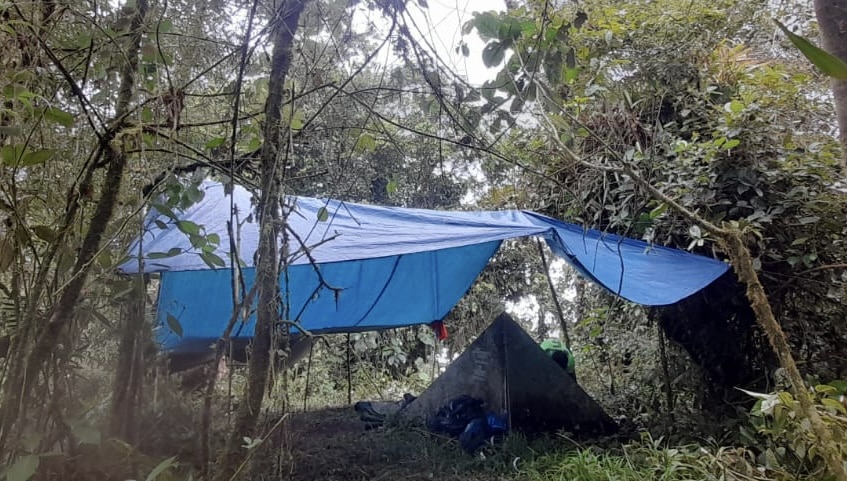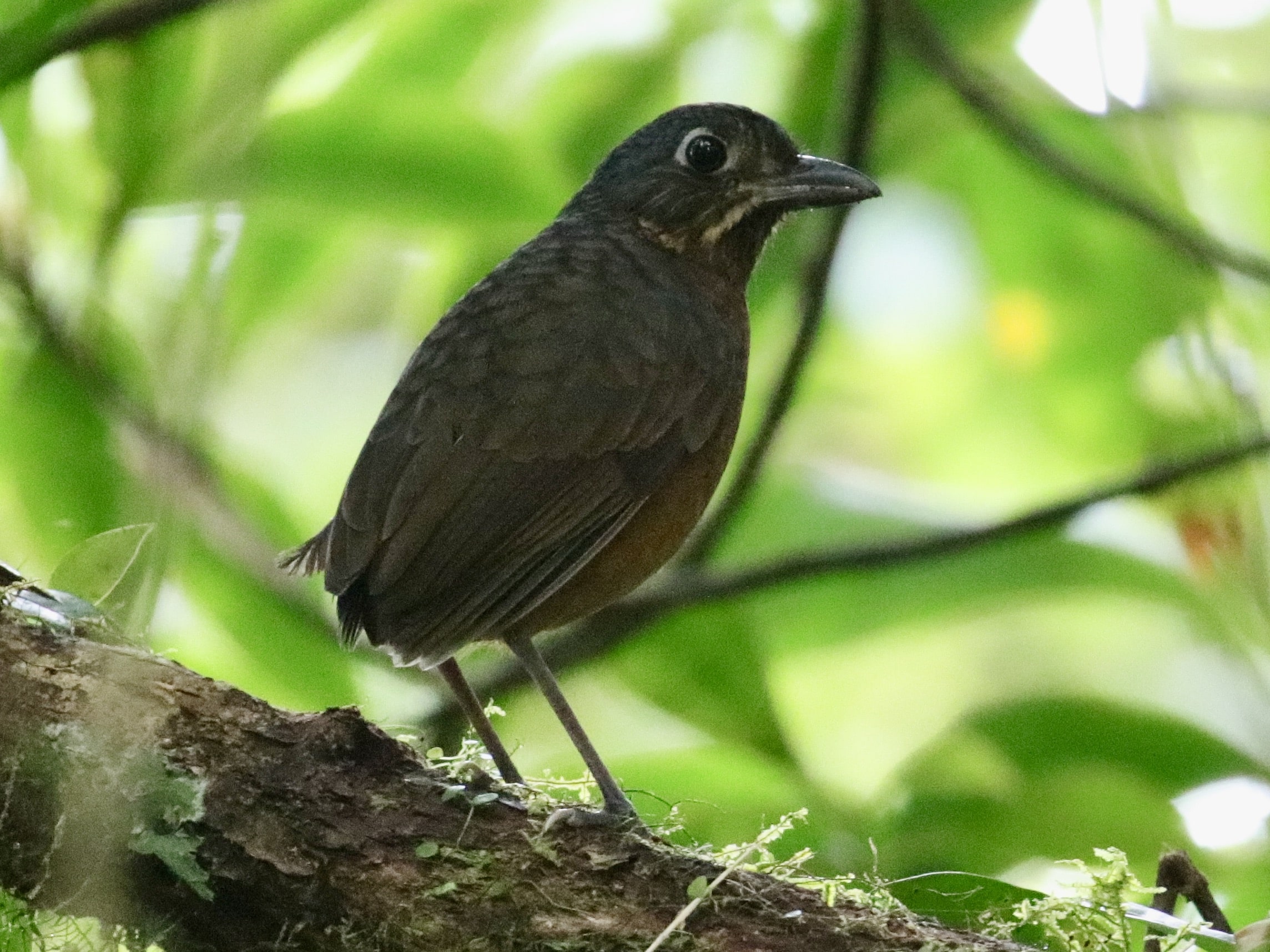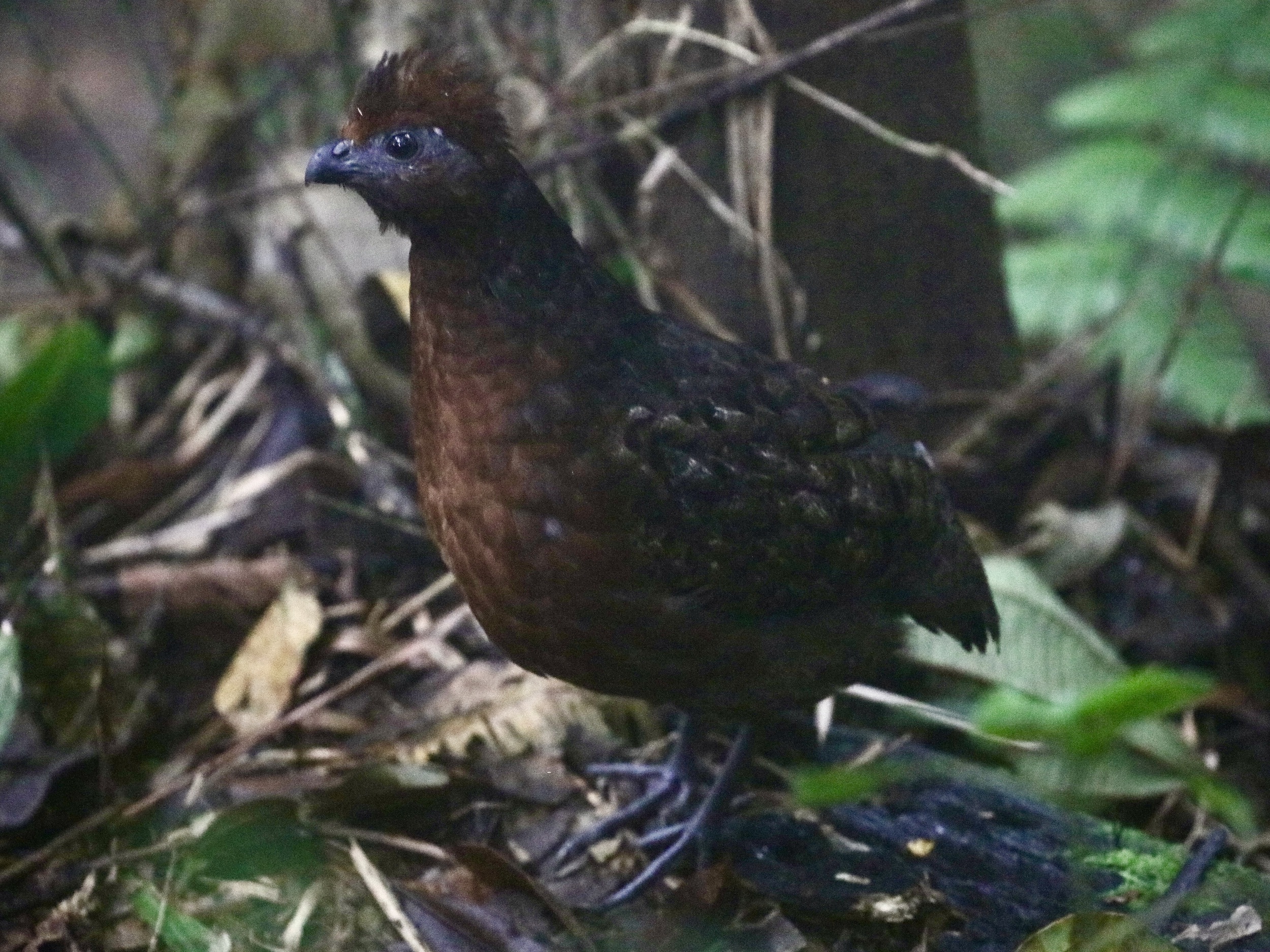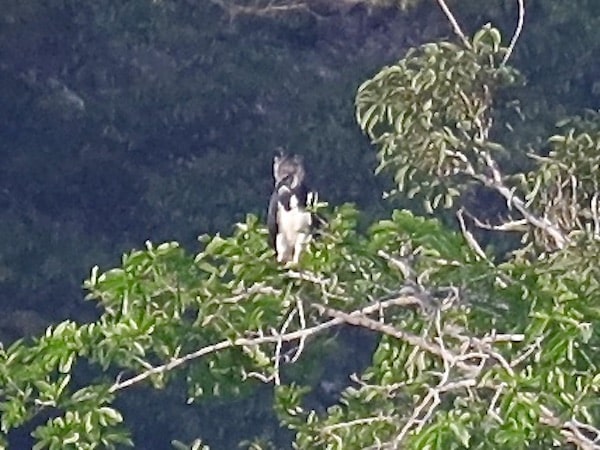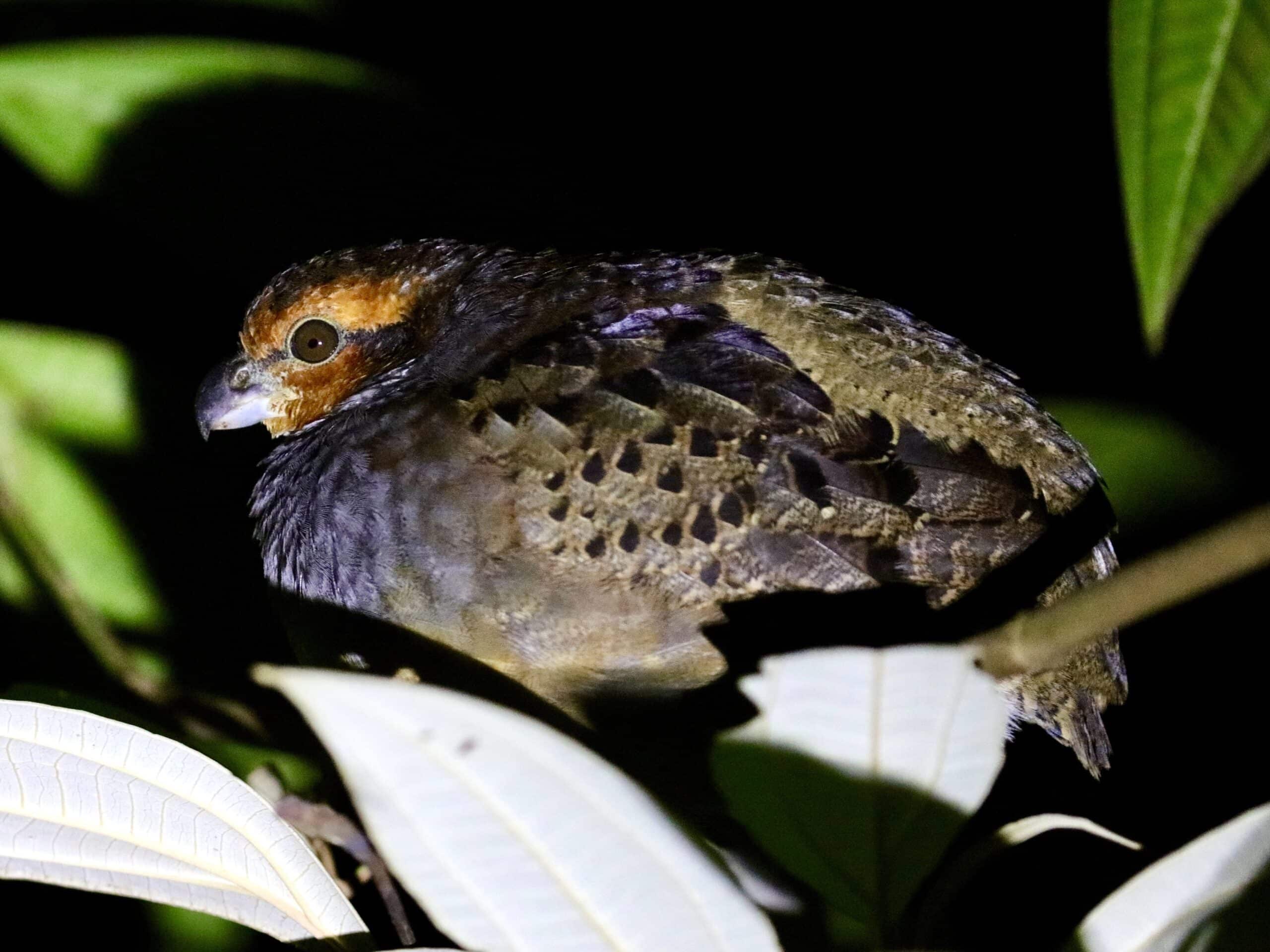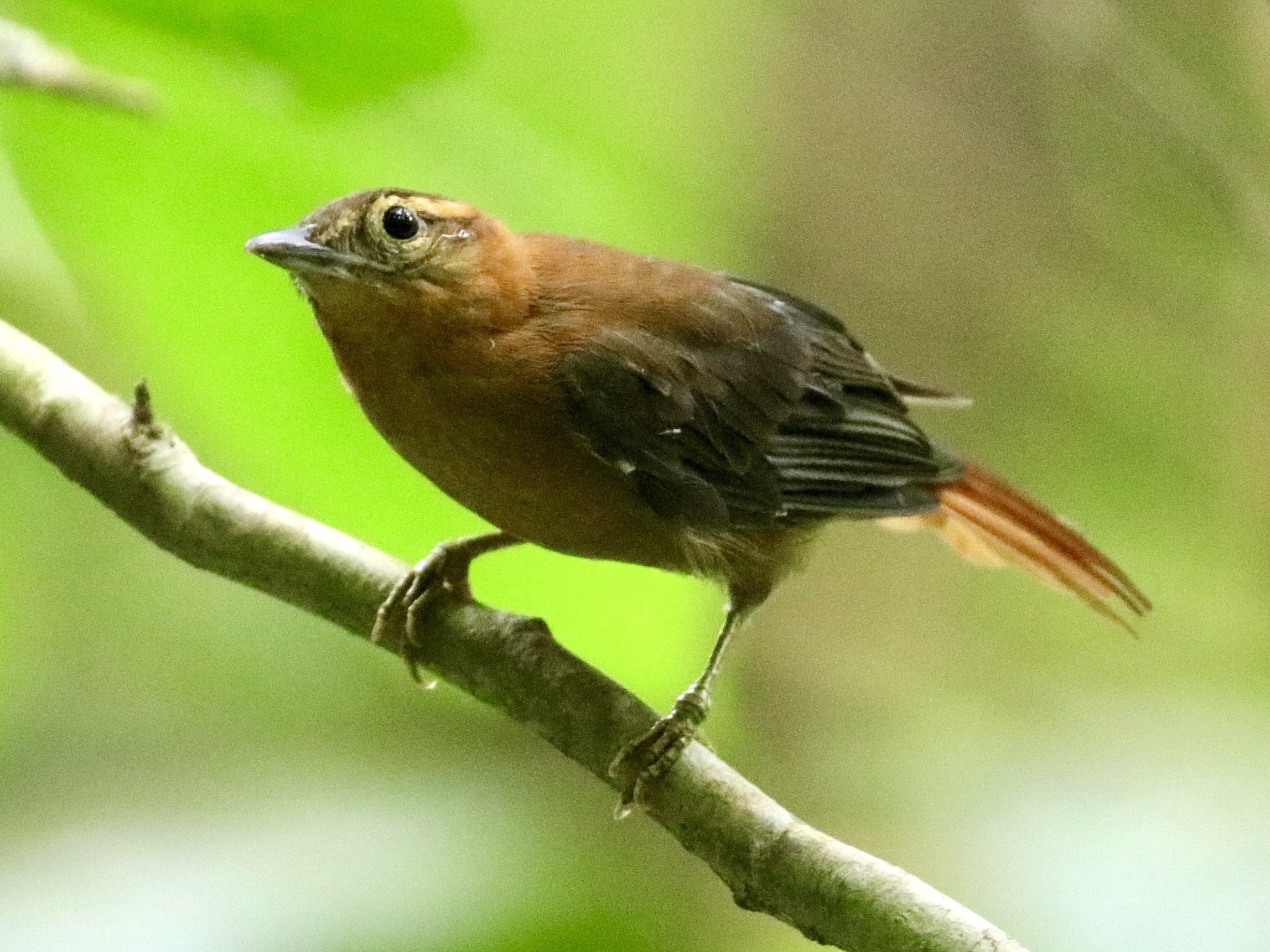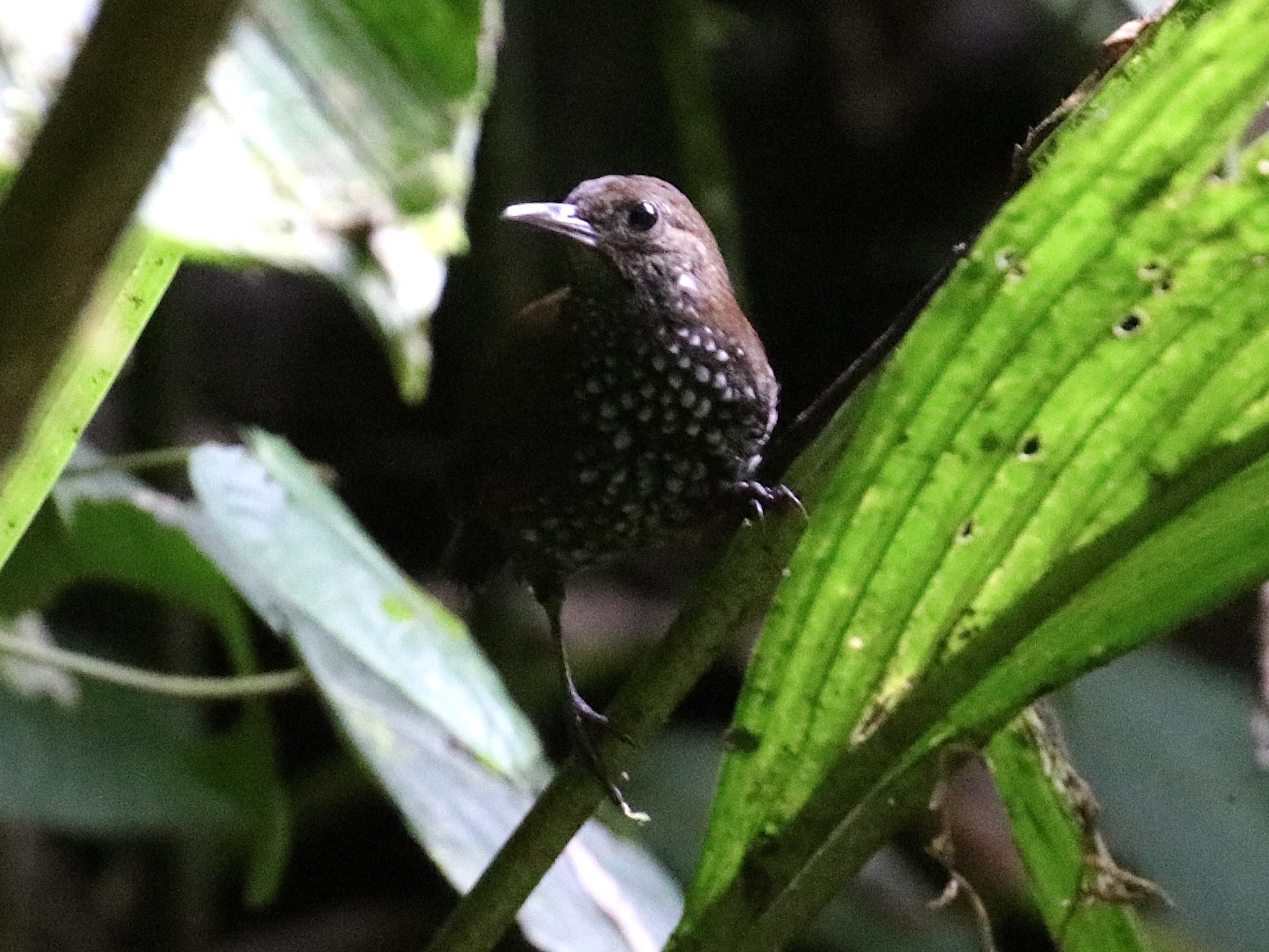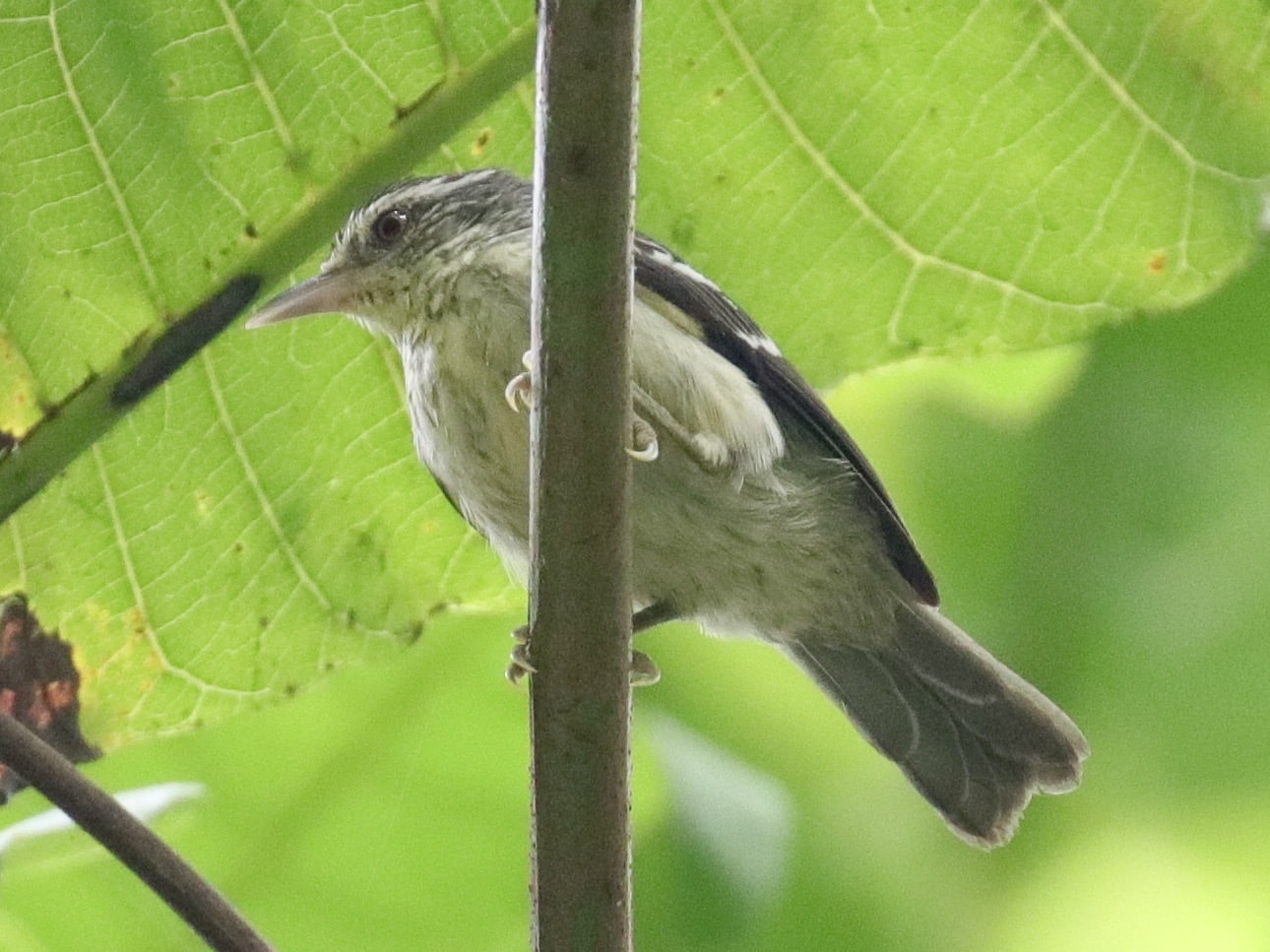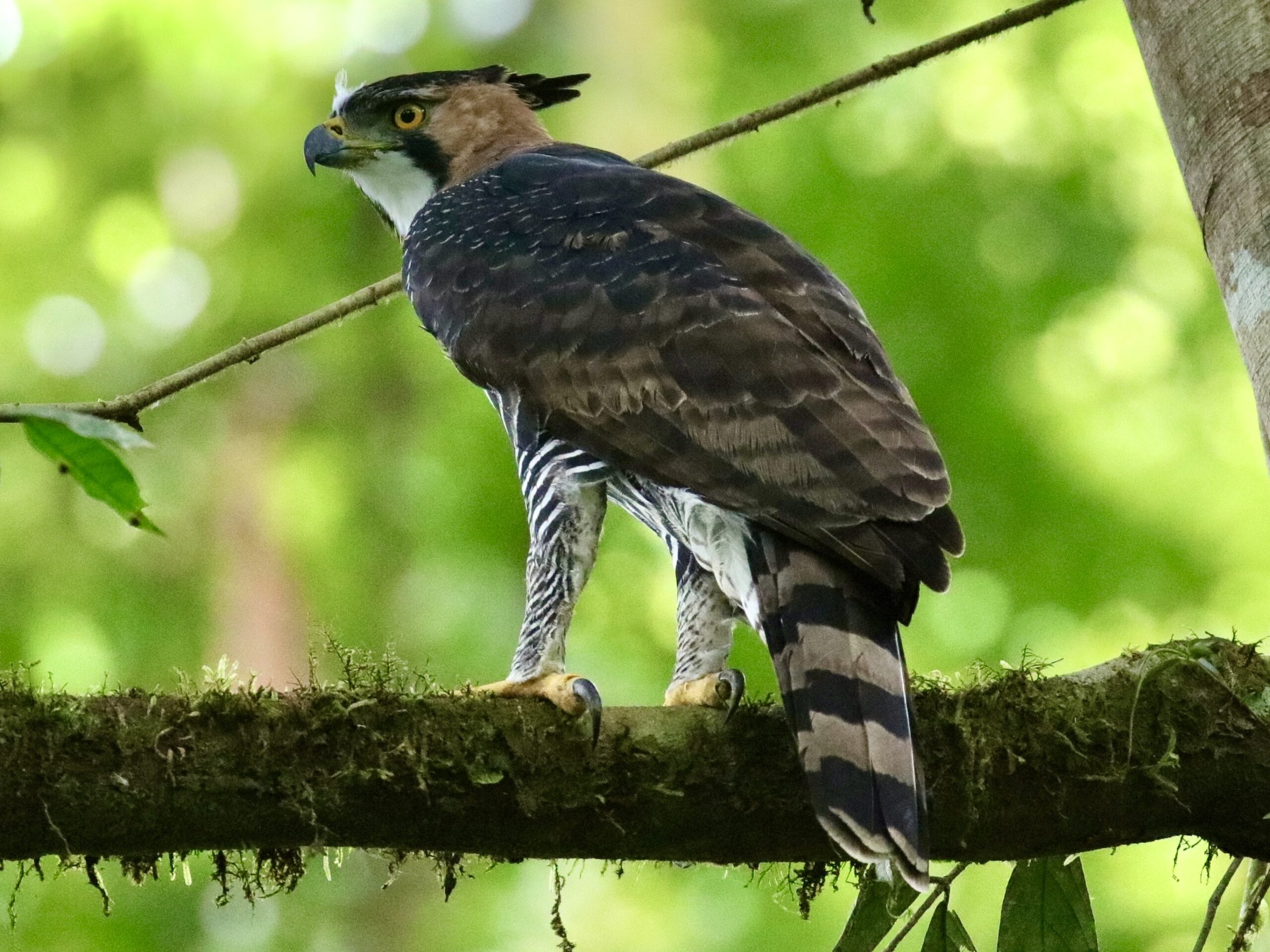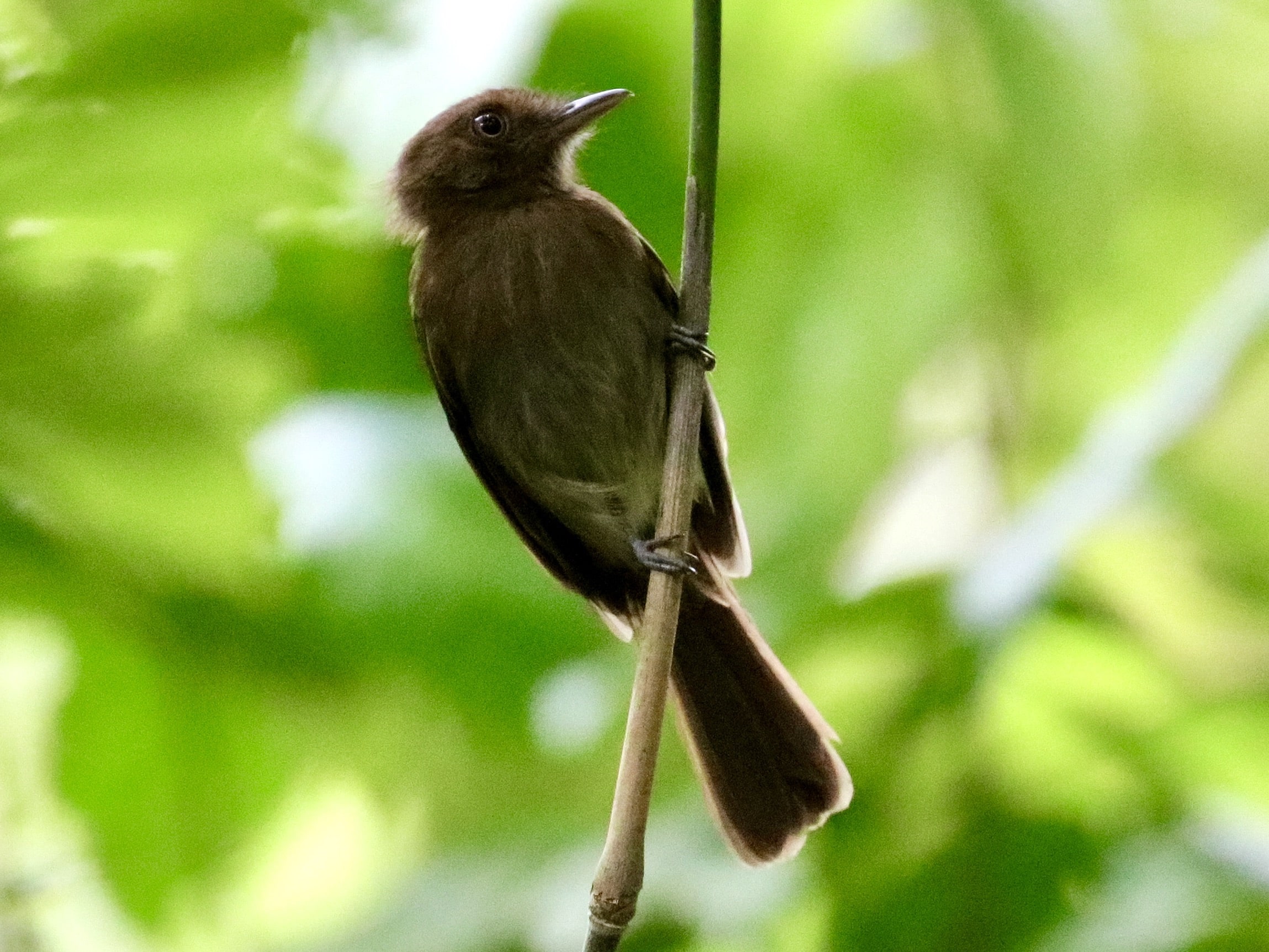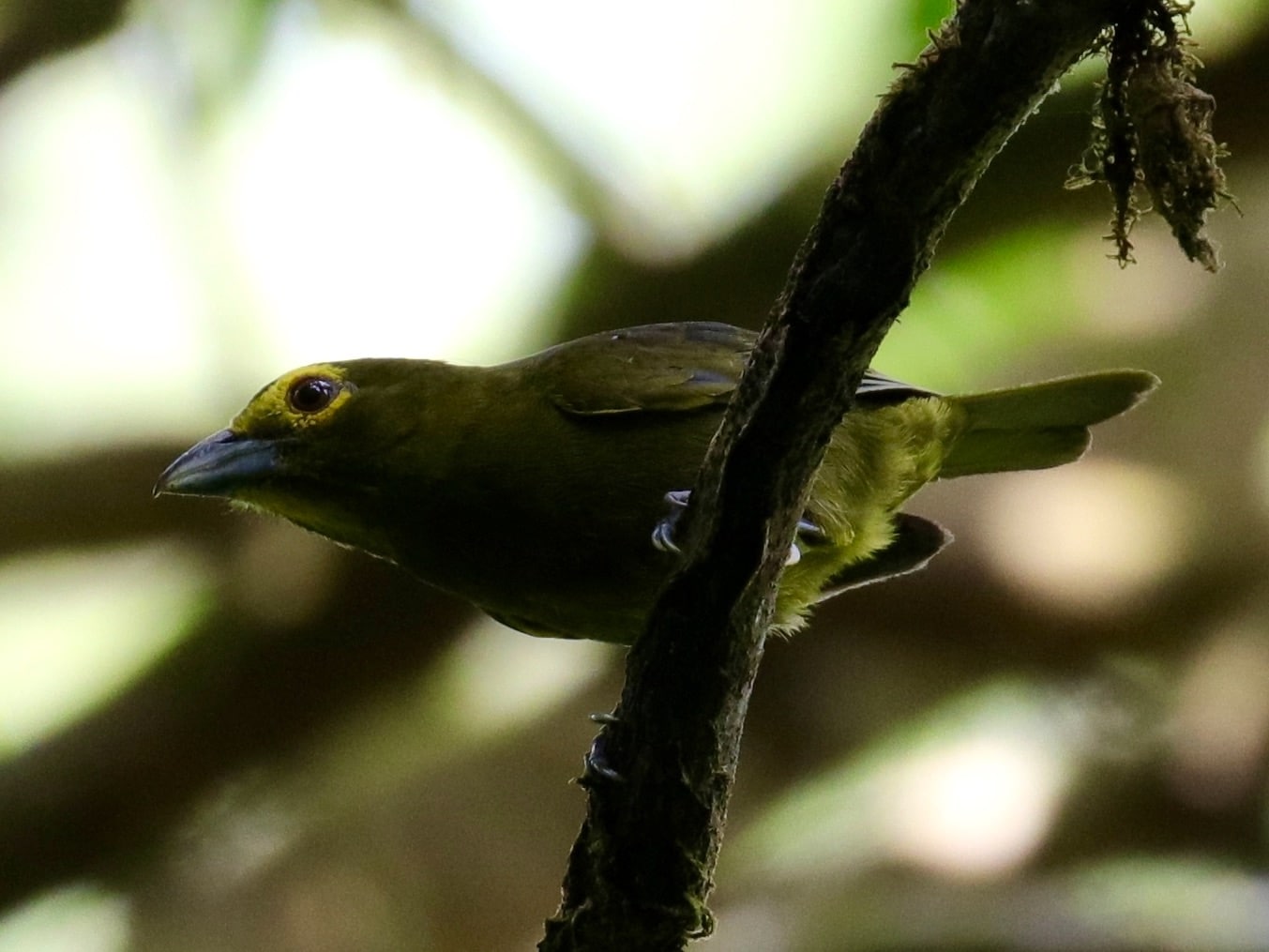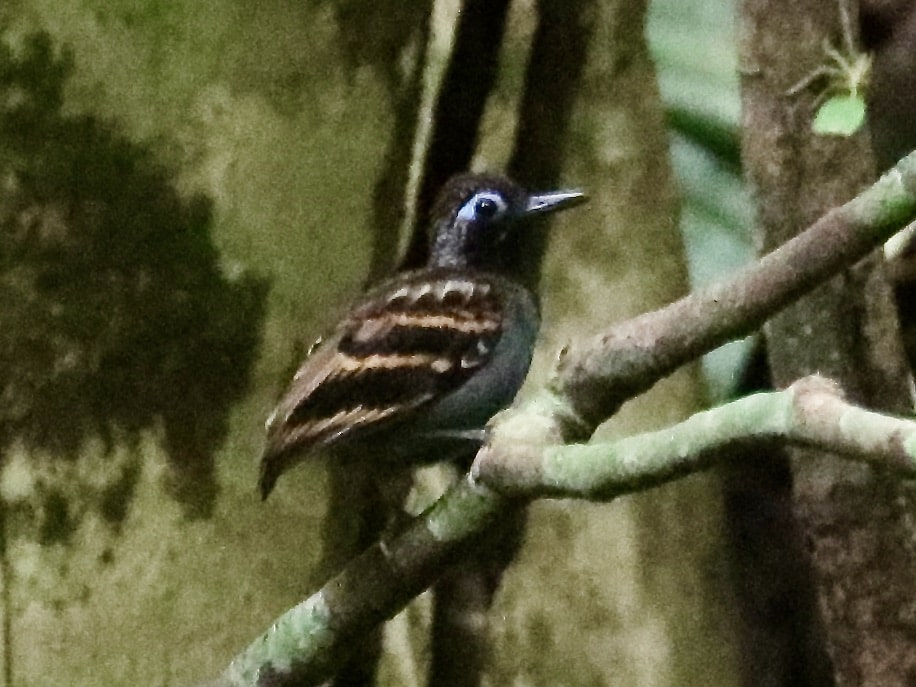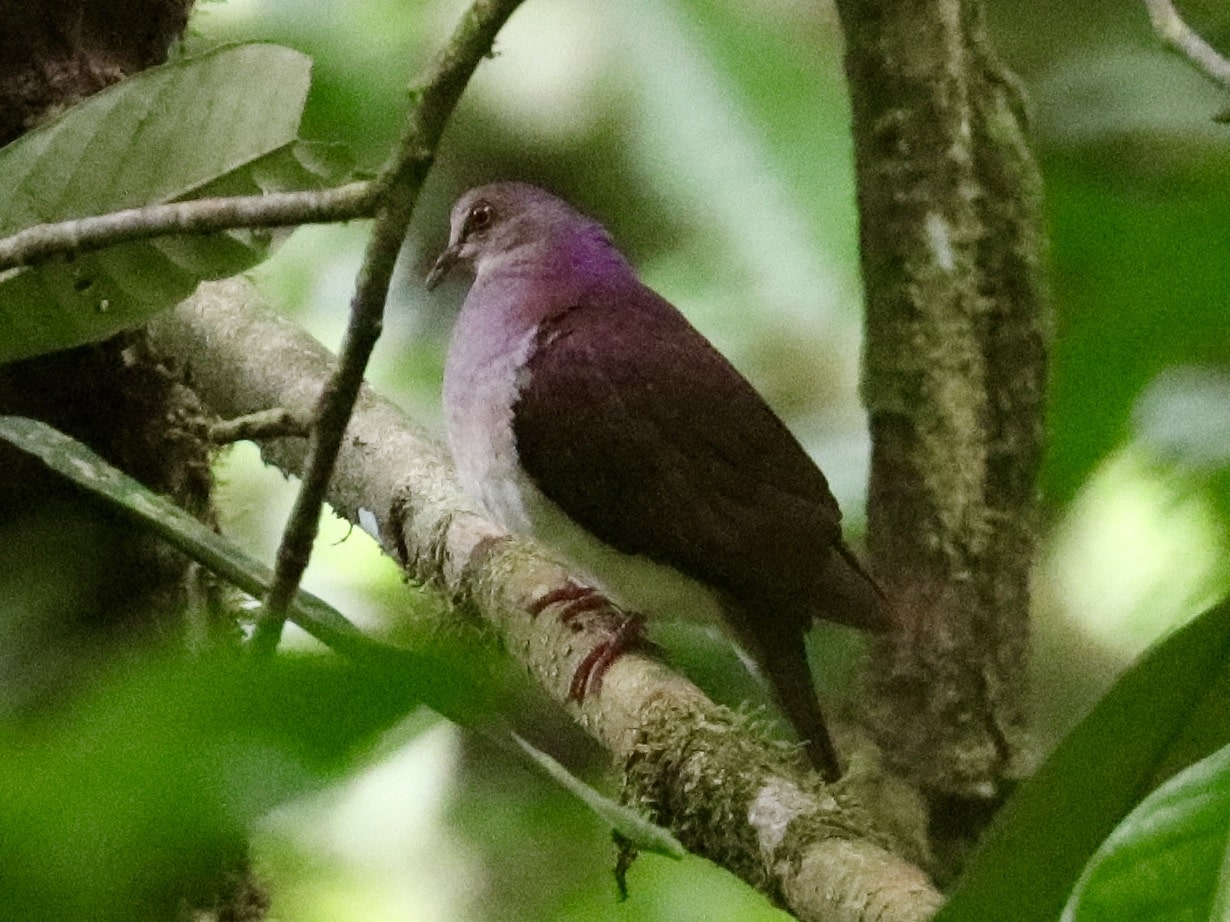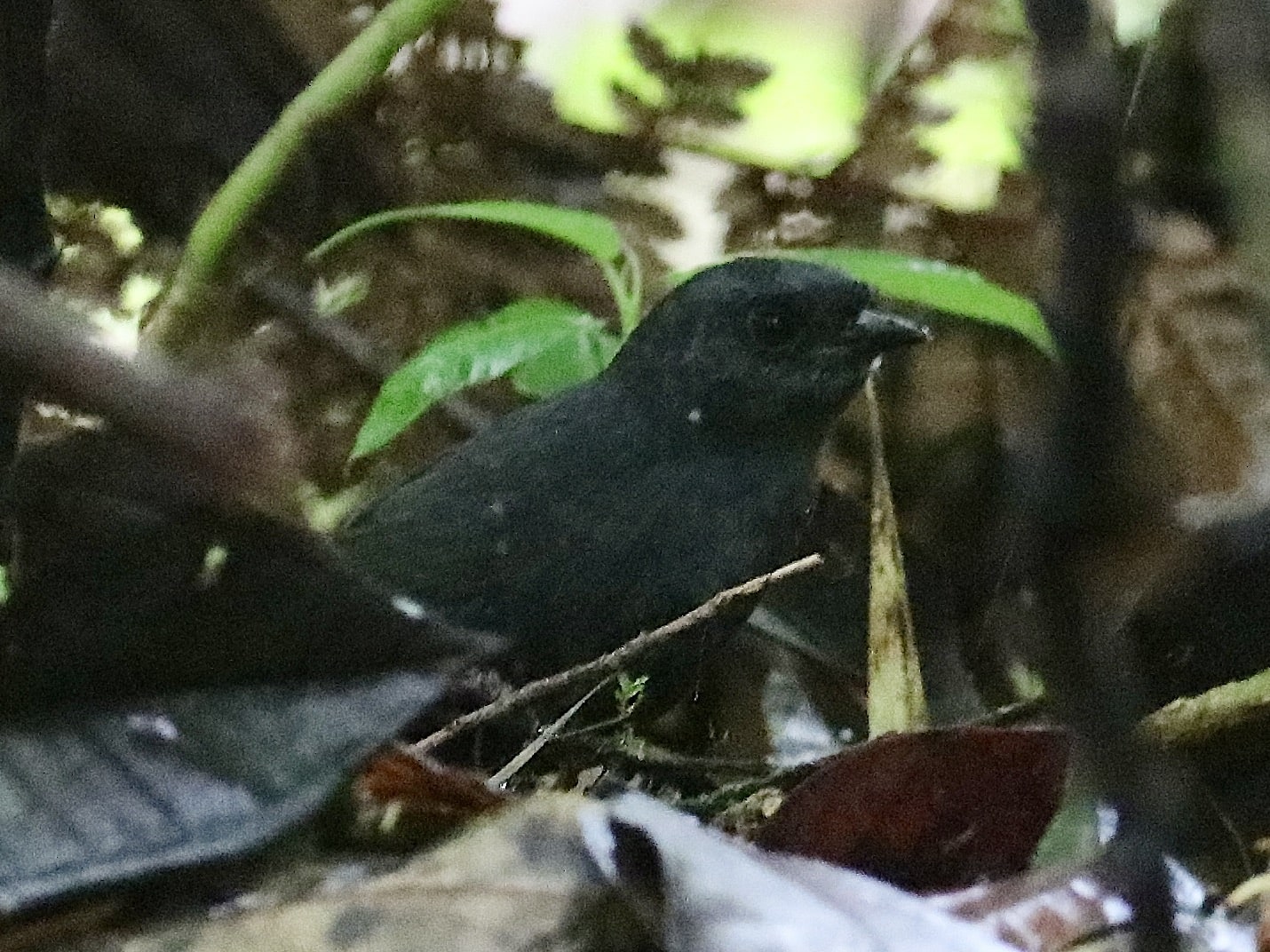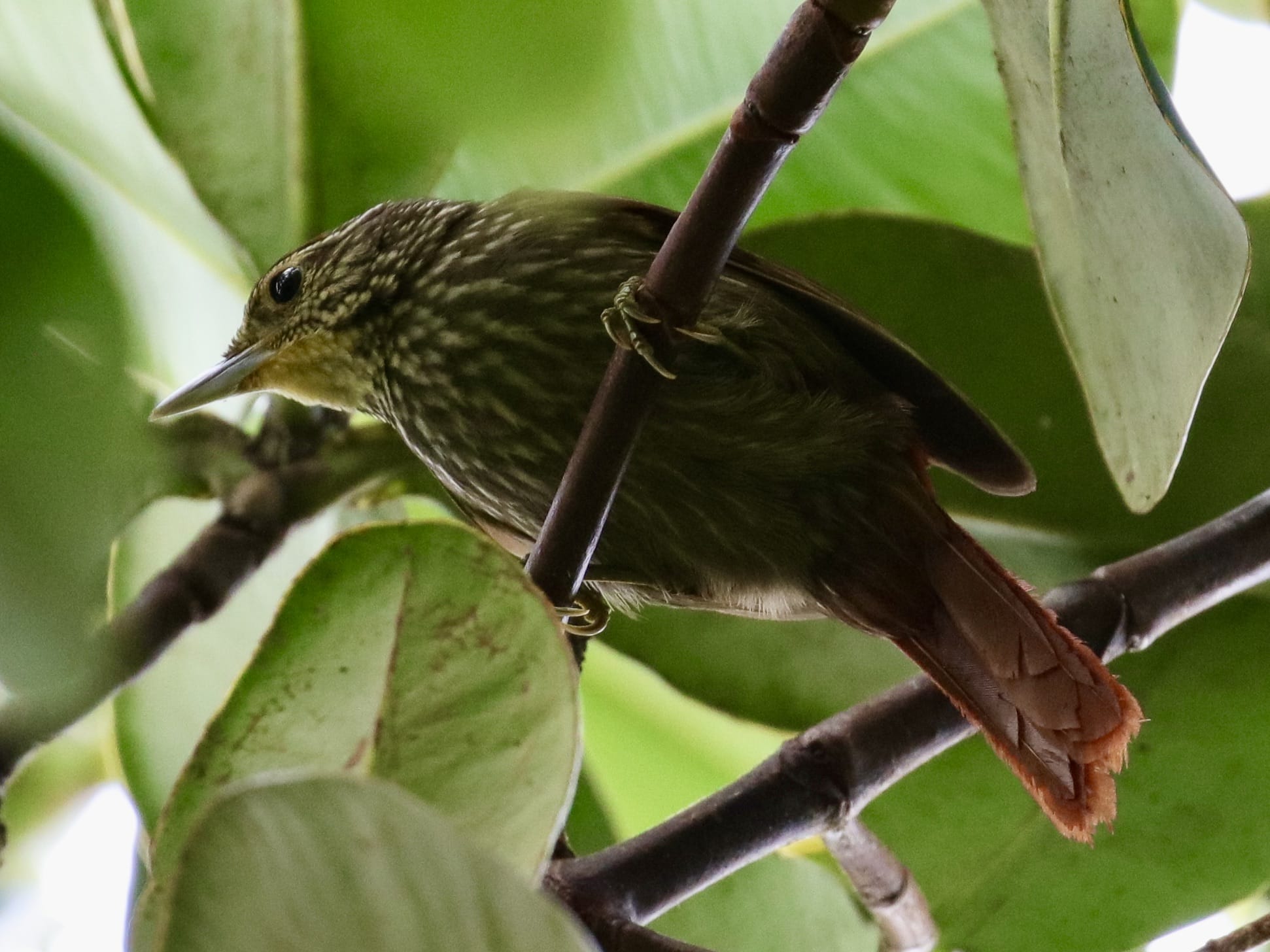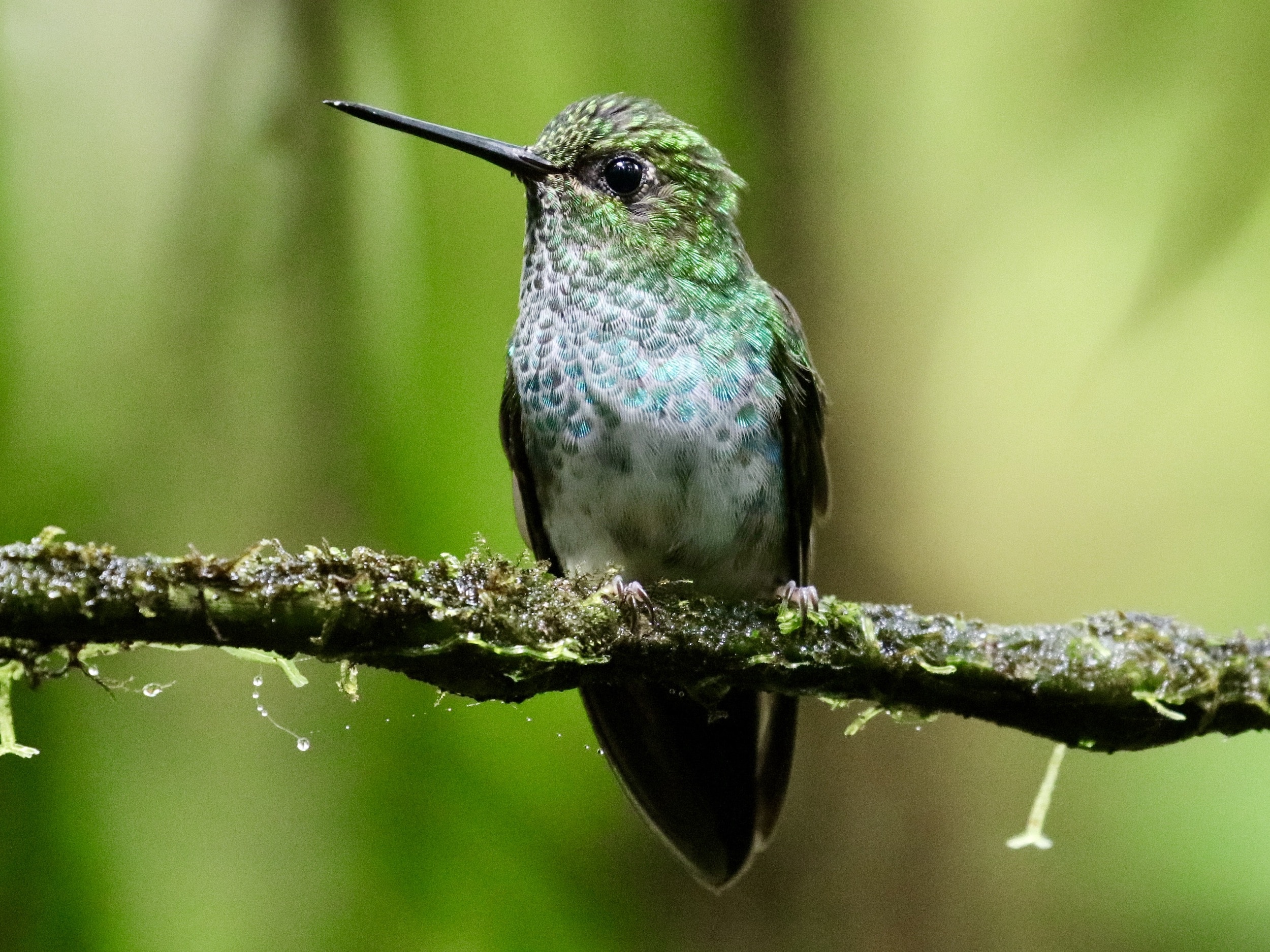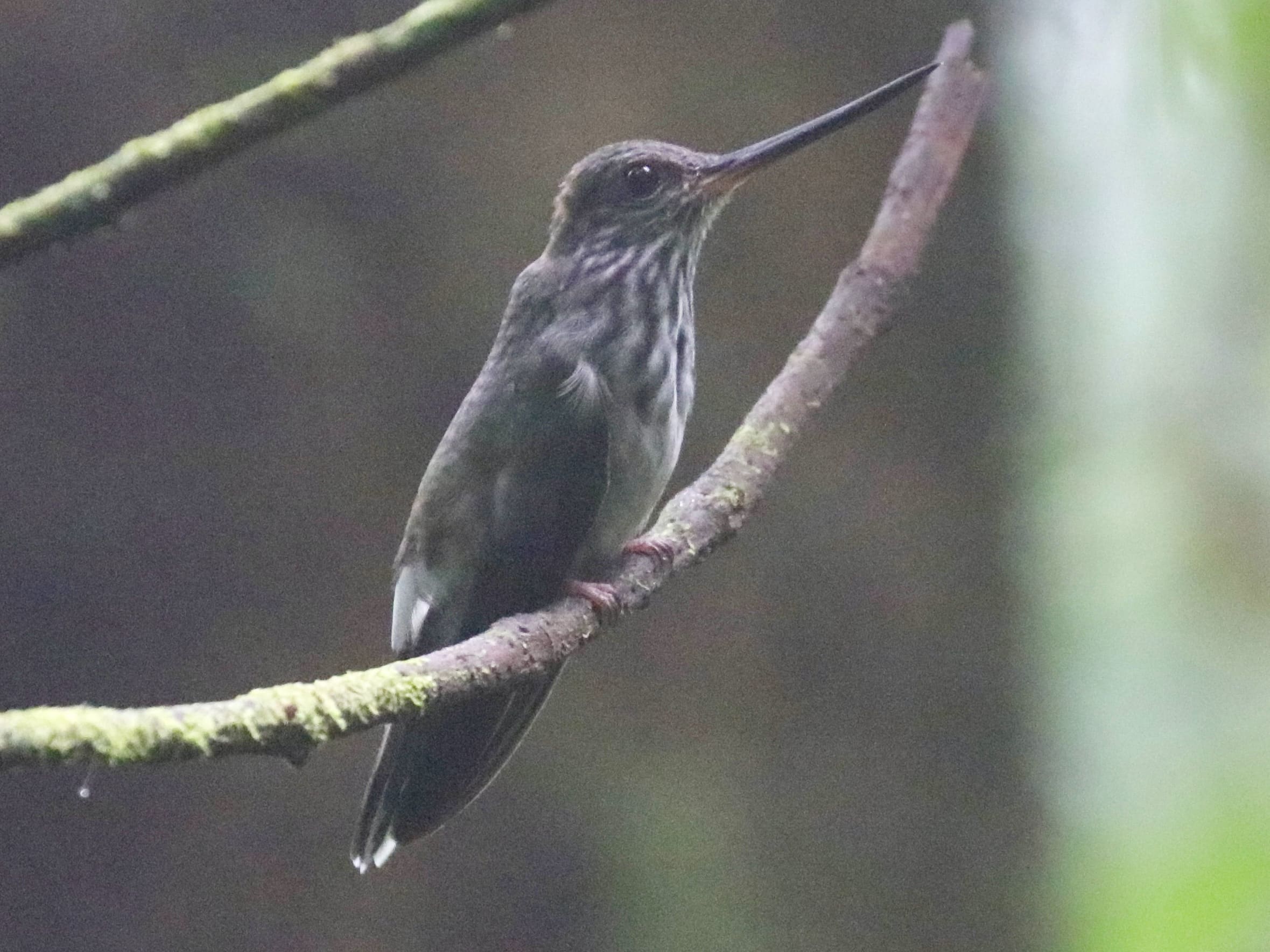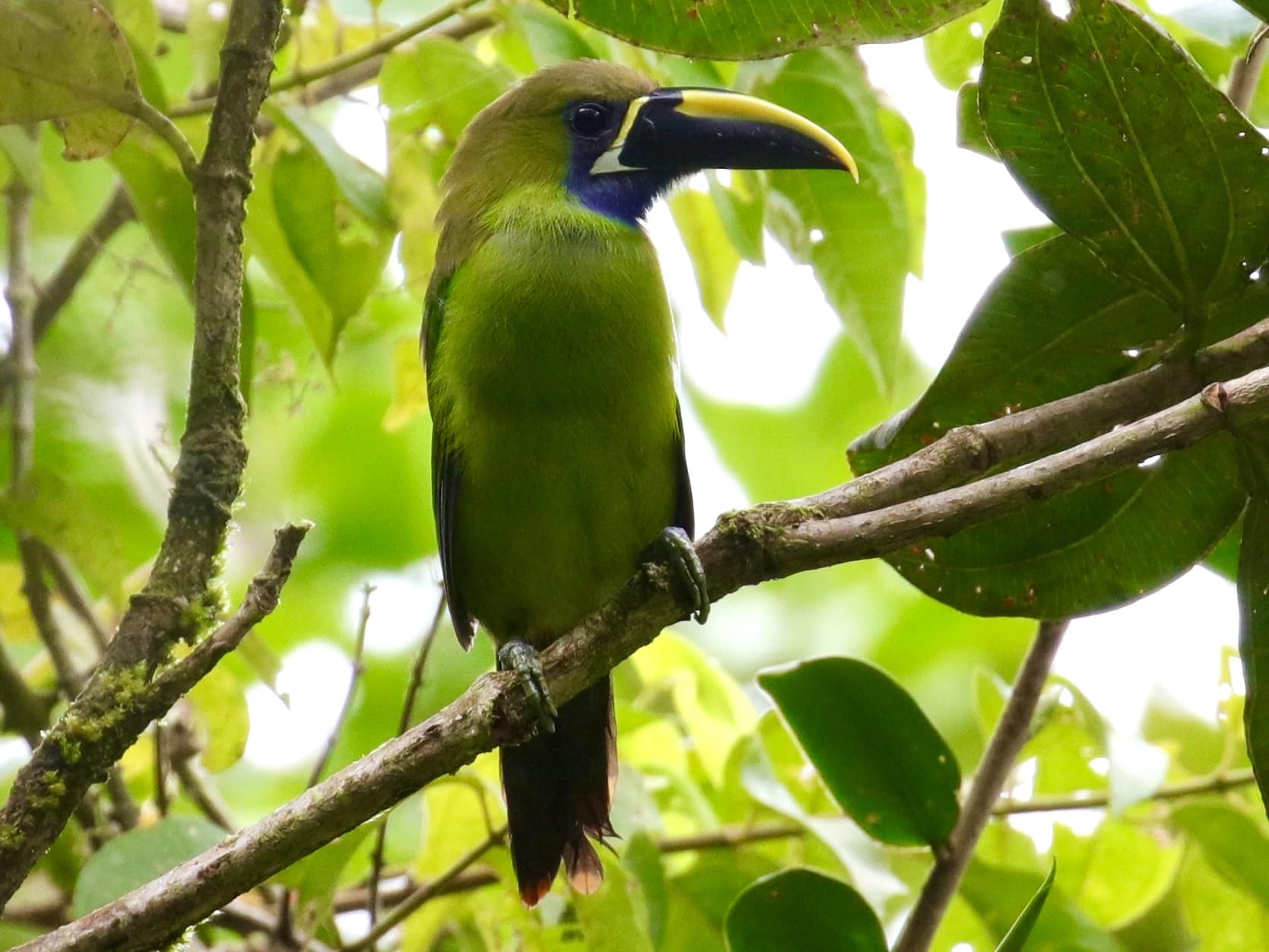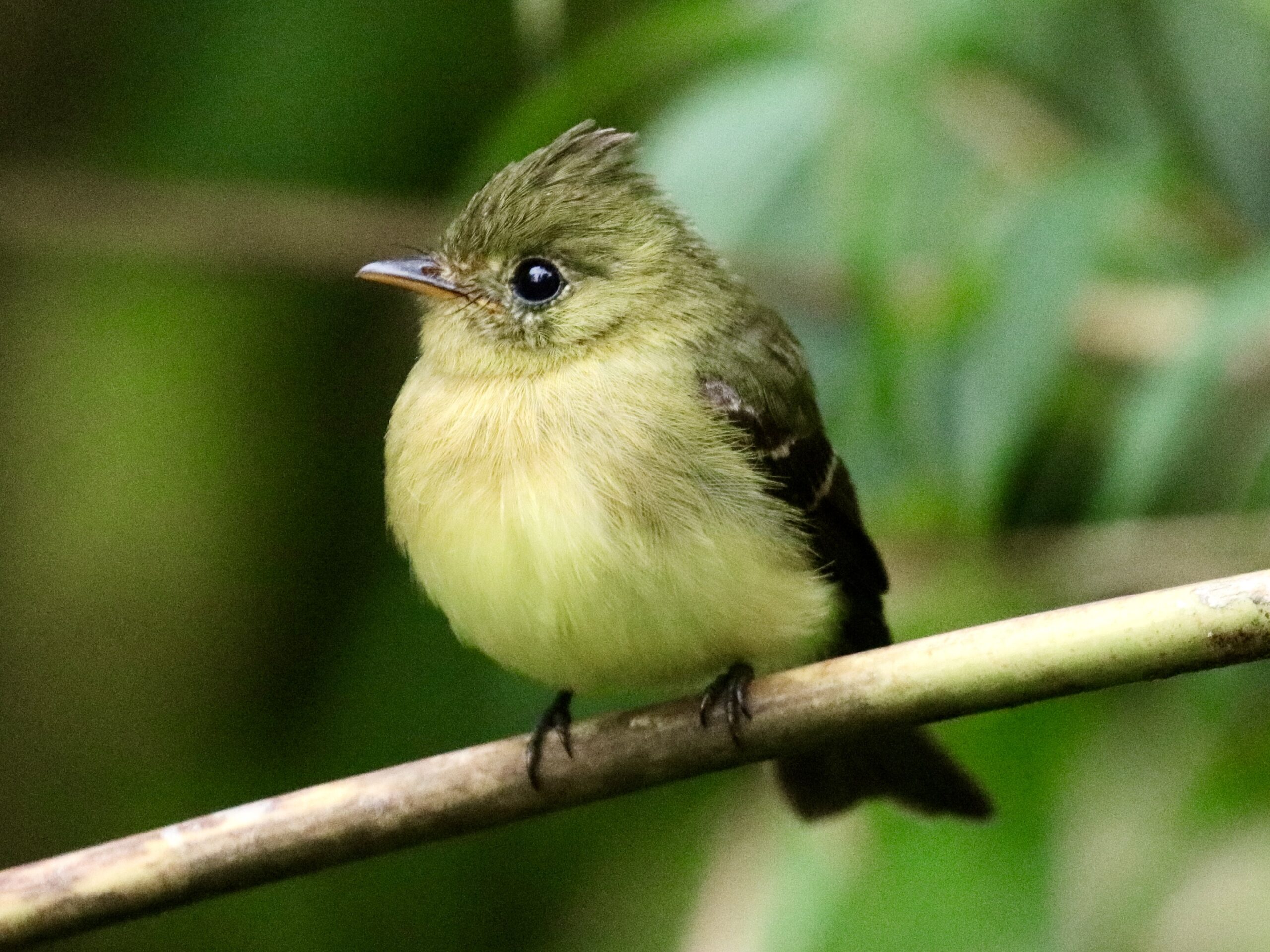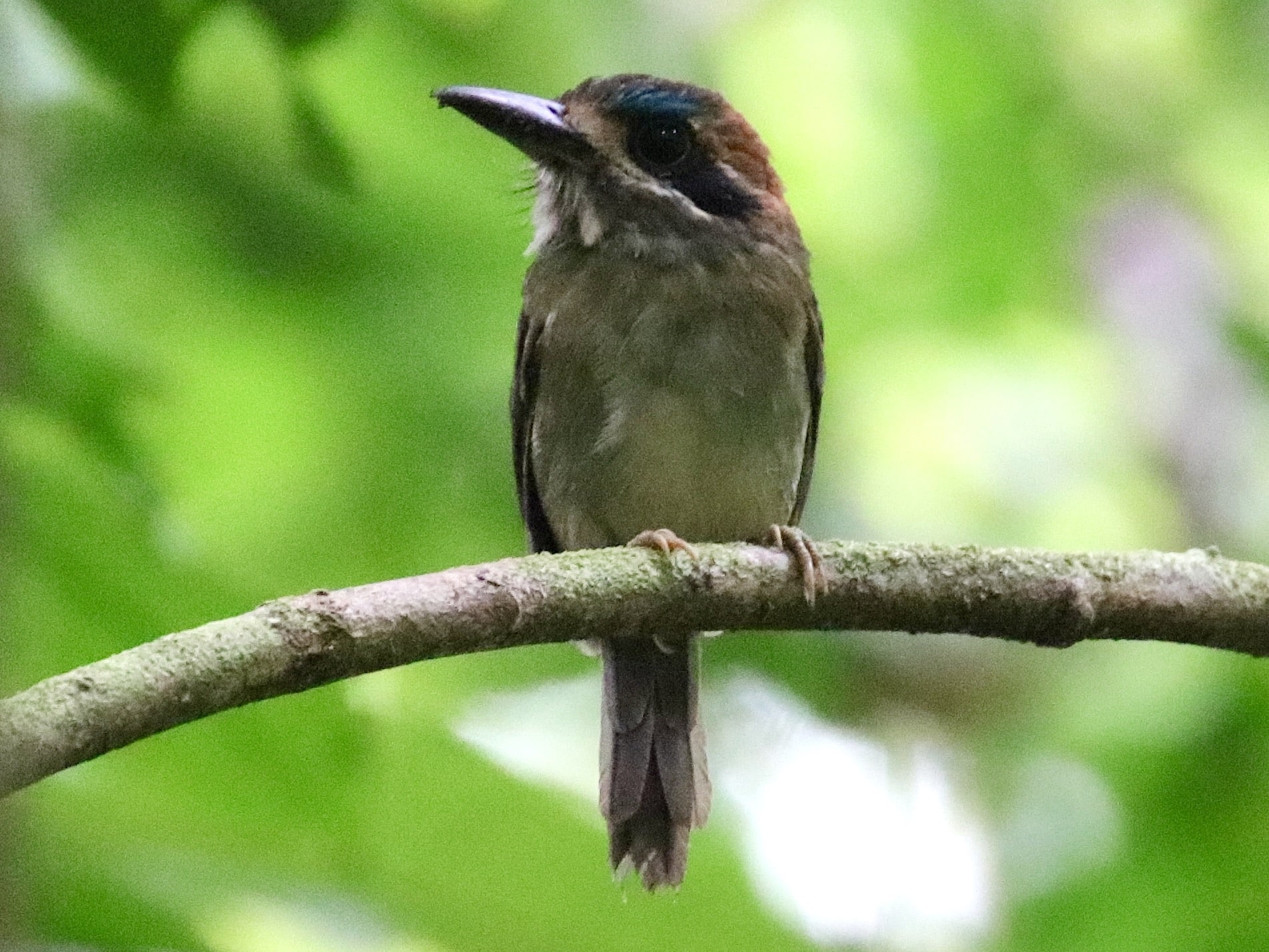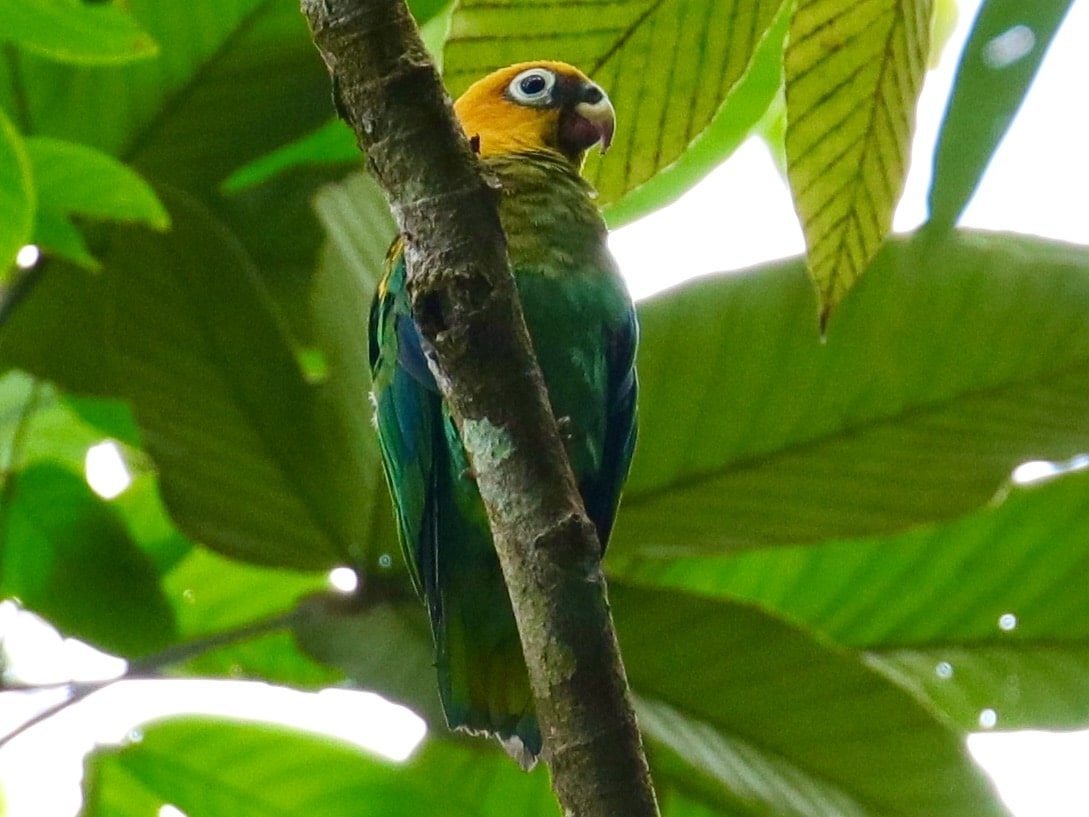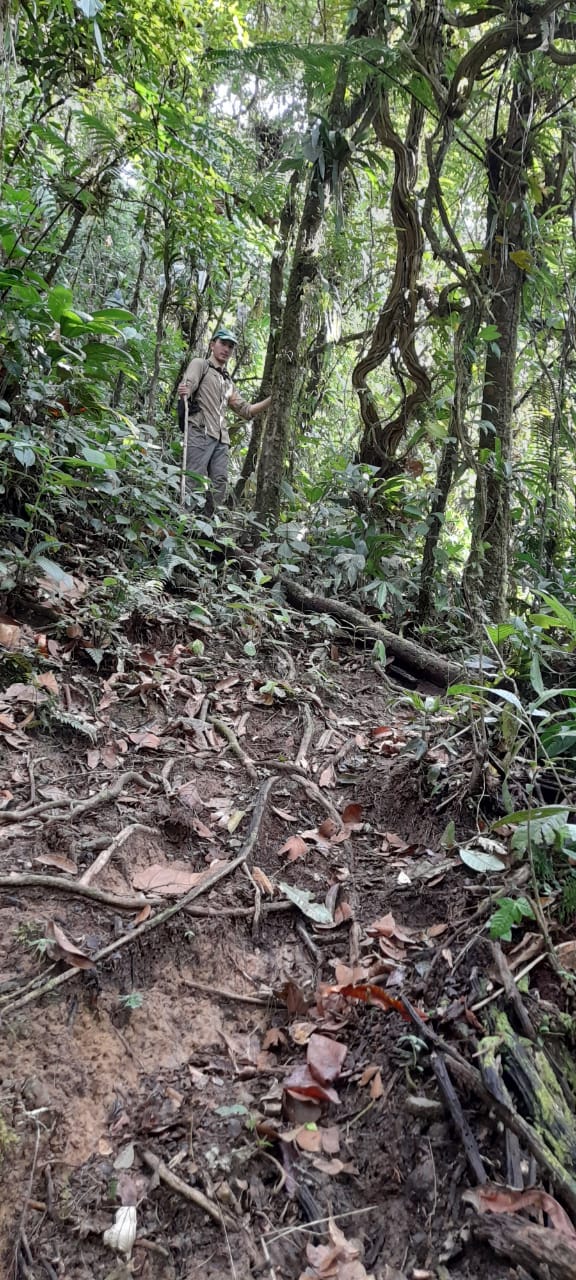The opening of the Canopy Camp in 2014 was a pioneering event for birding and ecotourism in Darién, the far eastern province of Panama. The humid lowlands of Darién play host to a wide variety of sought-after birds, from the near-endemic Gray-cheeked Nunlet and Dusky-backed Jacamar, to the South American Spot-breasted Woodpecker and Black-capped Donacobius, to the rare and spectacular Harpy and Crested Eagles—all reliably seen on Canopy Camp tours!
To this day, however, the endemic or near-endemic birds of the Darién highlands remain rarely observed, confined as they are to a few remote mountains along the Panama–Colombia border. While I was in Panama working for the Canopy Family, I had decided to try to see as many of Panama’s endemic, near-endemic, and otherwise special birds as possible, and this aspiration necessitated a trip to the peak in the southeast of Darién, within Darién National Park, known as Cerro Pirre. In March of 2022, with the Canopy Family’s coordination and logistical support, I managed to arrange a five-night camping trip up to Cerro Pirre with Isaac Pizarro, the most experienced birding guide in the Darién highlands.
The entrance to Darién National Park.
On March 20 I departed the Canopy Camp and met Isaac in Yaviza, the famous town where the Pan-American Highway ends, interrupted by the Darién Gap. Isaac took us by boat to his hometown of El Real de Santa María, and from there we drove to the beginning of the trail into the Darién National Park, stopping briefly at a roadside colony of near-endemic Black Oropendolas. We spent our first night at the ranger station known as Rancho Frío, still in the lowlands and therefore not particularly frío, but conveniently equipped with power, running water, and satellite TV. Rancho Frío is much more frequently visited by birders than are the upper reaches of Pirre, as it is more accessible and provides access to some excellent lowland birding. Indeed, along the trail to Rancho Frío and in the vicinity thereof we found a number of interesting birds, including Yellow-backed Tanager, Double-banded Graytail, Brownish Twistwing, Lemon-spectacled Tanager, and Slate-throated Gnatcatcher.
“Rancho Plástico,” around 600m asl, where we camped for our second and sixth nights.
The following day we hiked up to Rancho Plástico, which essentially consists of a plastic tarp extended over some logs. We looked for mixed flocks along the way and managed to see our first Scarlet-browed Tanagers, though not too much else. At Rancho Plástico, however, Isaac successfully located three special and often very difficult birds: Sharpbill, vocalizing in a tree right over the campsite, and Sapayoa and Wing-banded Antbird in a nearby ravine. At night Isaac spent some time looking for roosting Tawny-faced Quails, but we eventually decided to conserve our energy for the highland birds the next morning.
|
Sharpbill at the Rancho Plástico campsite. |
A male Sapayoa showing its yellow crownstripe. |
I had thought that the uphill walk from Rancho Frío to Rancho Plástico was rather challenging, but Isaac assured me that it was “very easy” compared to what was in store for the next day. On the morning of March 22 we climbed from Rancho Plástico (around 600m above sea level) to the summit ridge of Cerro Pirre (here, around 1200m). The trail was quite steep, at times ridiculously so, with the result that we rapidly gained elevation and entered the cloudforest habitat of the Pirre specialties.
As the forest ecology changed, we heard and saw our first Pirre Chlorospinguses and Varied Solitaires. At the summit, we found a perched Blue-fronted Parrotlet, a showy Choco Tapaculo, our first Pirre Hummingbird (a young male), Sooty-headed Wren, and the “Violet-throated” subspecies of Northern Emerald-Toucanet, among other birds. We spent much of the afternoon waiting by fruiting trees for the near-endemic Green-naped Tanager (split from the Spangle-cheeked Tanager of Costa Rica and western Panama), but it did not show this time. Nor did the Bare-shanked Screech-Owl, which we spent some time looking for after dark. Despite the rainy nighttime conditions, camping up at this altitude was made much more pleasant by the cooler temperatures!
|
The common but highly range-restricted Pirre Chlorospingus. |
The Varied Solitaire is easily located by its “flute-like” song. |
On March 23, after another early morning attempt at the screech-owl, we continued along the summit ridge to an area that Isaac called Barranco Pelado. On the way I was thrilled to find our first Green-naped Tanagers and Russet-crowned Quail-Doves, as well as a Yellow-collared Chlorophonia, an adult male Pirre Hummingbird, and many Greenish Pufflegs. And in the afternoon, after setting up camp, we secured beautiful views of the Beautiful Treerunner, a near-endemic bird made all the more difficult by its apparent habit of associating with the vaguely similar but more conspicuous Lineated Foliage-gleaner (of the near-endemic subspecies tacarcunae).
|
|
|
Clockwise from top left: Green-naped Tanager, Pirre Hummingbird, Beautiful Treerunner, and Russet-crowned Quail-Dove.
Later in the afternoon we saw more Green-naped Tanagers and a distant Black-and-white Hawk-Eagle from our campsite, and finally, at night, we found our Bare-shanked Screech-Owl. As many of the special birds of the Darién highlands are obviously closely related to similar species in the highlands of Costa Rica and western Panama (e.g., Varied Solitaire and Black-faced Solitaire, Green-naped Tanager and Spangle-cheeked Tanager), I was half-hoping that this disjunct population of Bare-shanked Screech-Owl might turn out to be another species in its own right (Pirre Screech-Owl, perhaps). No such luck, according to current research, but it was an exciting find nonetheless!
|
Yellow-collared Chlorophonia, a Choco endemic. |
Bare-shanked Screech-Owl, restricted to the highlands. |
By this point I had seen almost everything that I was hoping to see. The major outstanding target was the Pirre Warbler, split from Black-cheeked Warbler and found only on Cerro Pirre and Cerro Tacarcuna along the Panama–Colombia border. So on March 24 we continued on to the last known location for this bird, further along the ridge and about 1400m above sea level, known as Lámina, where we ended up staying an unplanned extra night.
Campsite at Barranco Pelado.
Campsite at Lámina, featuring a pyramidal metal structure of uncertain function. Photo by Isaac Pizarro.
In brief, a day and a half of intensive searching in the Lámina area yielded many interesting birds—including Tooth-billed Hummingbird, Black-eared Wood-Quail, Scaled Antpitta, Rufous-rumped Antwren, and more Green-naped Tanagers and Beautiful Treerunners—but no Pirre Warblers. Once easy to see even at the first campsite along the summit ridge, over the last decade this species has gradually disappeared from every accessible site, such that Isaac himself has not recorded it anywhere for more than a year. Presumably (or at least hopefully) more time spent exploring suitable habitat further afield from Lámina would suffice to locate this bird, but this was not a task that I, starting to run low on batteries, contact lenses, socks, food, and patience, was well-placed to undertake.
|
|
|
Scaled Antpitta and Black-eared Wood-Quail, two usually quite retiring birds that showed well near Lámina.
Thus, we spent the afternoon of March 25 walking all the way back along the ridge and down to Rancho Plástico for our last night in the national park. We did manage to see two birds of particular interest. First, once we were back at Rancho Plástico, Isaac spotted a distant Harpy Eagle across a valley from a lookout point near the campsite. I had already seen this bird exceptionally well at a nest site near the Canopy Camp, but it was still exciting to come across one at large in the forest. Second, that night Isaac renewed his search for a roosting Tawny-faced Quail, this time successfully.
|
A (very) distant Harpy Eagle surveying its forest domain. |
A male Tawny-faced Quail, located by Isaac at its night roost. |
March 26 was our last day, but we still made time to explore some steep ravines around Rancho Plástico for more birds, notably Sharp-tailed Streamcreeper and Slaty-winged Foliage-gleaner. The walk down from Rancho Plástico back to Rancho Frío held out the potential for more important birds, especially the near-endemic Choco Tinamou and Viridian Dacnis, although we did not see either of these (more on these two species below). We did encounter the first other people I had seen in the national park other than myself, Isaac, and our porters—a couple of tourists from the Netherlands and their hiking guide.
As soon as we got to Rancho Frío for lunch it started to pour with rain (we had been very lucky with the weather for most of the trip), so we got out our umbrellas for the trip back to El Real, from there back to Yaviza, and from there to the welcome luxuries—including a shower and a bed!—of the Canopy Camp.
|
|
|
Slaty-winged Foliage-gleaner and Sharp-tailed Streamcreeper—both rare, hard to see, and even harder to photograph.
The many birding successes of this trip were all thanks to Isaac Pizarro, the undisputed birding expert of the Darién highlands, and to his team of porters, without whom the trip would of course have been impossible. Many thanks also to everyone at the Canopy Family for their indispensable support, especially Carlos Bethancourt, Danilo Rodriguez Jr., Abel Consuegra, and the staff of the Canopy Camp. Indeed, birders interested in the specialties of Darién, both highland and lowland, would be well advised to have the Canopy Family arrange an expedition to Cerro Pirre with Isaac in combination with a stay at the Camp, as they did for me.
|
Double-banded Graytail. |
Ornate Hawk-Eagle. |
|
Brownish Twistwing. |
Lemon-spectacled Tanager. |
|
Wing-banded Antbird. |
Violaceous Quail-Dove. |
|
Choco Tapaculo. |
Lineated Foliage-gleaner. |
|
Greenish Puffleg. |
Tooth-billed Hummingbird. |
|
Northern Emerald-Toucanet. |
Tufted Flycatcher. |
|
Tody Motmot. |
Saffron-headed Parrot. |
Birds Seen
All the birds that I saw well enough to recognize, from Yaviza on March 20 back to Yaviza on March 26. Clements/eBird taxonomy.
Gray-headed Chachalaca (Ortalis cinereiceps)
Crested Guan (Penelope purpurascens aequatorialis)
Great Curassow (Crax rubra rubra)
Tawny-faced Quail (Rhynchortyx cinctus cinctus) Seen on a night roost near Rancho Plástico.
Black-eared Wood-Quail (Odontophorus melanotis melanotis)
Scaled Pigeon (Patagioenas speciosa)
Plumbeous Pigeon (Patagioenas plumbea)
Violaceous Quail-Dove (Geotrygon violacea albiventer) Seen well at Rancho Plástico.
Russet-crowned Quail-Dove (Zentrygon goldmani goldmani) Common by voice at the higher elevation sites.
Greater Ani (Crotophaga major) Most of the species on this list associated with waterside habitats were seen along the Chucunaque River between Yaviza and El Real.
Great Potoo (Nyctibius grandis) One on a day roost near Rancho Frío.
White-collared Swift (Streptoprocne zonaris bouchellii)
Green Hermit (Phaethornis guy coruscus)
Long-billed Hermit (Phaethornis longirostris cephalus)
Tooth-billed Hummingbird (Androdon aequatorialis)
Greenish Puffleg (Haplophaedia aureliae galindoi) Common and conspicuous along the summit ridge.
Violet-headed Hummingbird (Klais guimeti merrittii)
Crowned Woodnymph (Thalurania colombica fannyae)
Pirre Hummingbird (Goldmania bella)
Blue-throated Goldentail (Chlorestes eliciae earina)
Spotted Sandpiper (Actitis macularius)
Neotropic Cormorant (Nannopterum brasilianum brasilianum)
Cocoi Heron (Ardea cocoi)
Great Egret (Ardea alba egretta)
Snowy Egret (Egretta thula thula)
Little Blue Heron (Egretta caerulea)
Cattle Egret (Bubulcus ibis ibis)
Green Heron (Butorides virescens virescens)
Striated Heron (Butorides striata striata)
Capped Heron (Pilherodius pileatus) Along the trail to Rancho Frío.
White Ibis (Eudocimus albus ramobustorum)
King Vulture (Sarcoramphus papa)
Black Vulture (Coragyps atratus brasiliensis)
Turkey Vulture (Cathartes aura)
Osprey (Pandion haliaetus carolinensis)
Swallow-tailed Kite (Elanoides forficatus yetapa) Carrying nesting material.
Harpy Eagle (Harpia harpyja) Seen perched at a great distance from the lookout at Rancho Plástico.
Black Hawk-Eagle (Spizaetus tyrannus serus)
Ornate Hawk-Eagle (Spizaetus ornatus vicarius) Seen perched at close range along the trail to Rancho Frío.
Black-and-white Hawk-Eagle (Spizaetus melanoleucus) Seen perched at a great distance from the mirador at Barranco Pelado.
Black-collared Hawk (Busarellus nigricollis nigricollis)
Plumbeous Kite (Ictinia plumbea)
Great Black Hawk (Buteogallus urubitinga urubitinga)
Roadside Hawk (Rupornis magnirostris petulans)
White Hawk (Pseudastur albicollis costaricensis)
Broad-winged Hawk (Buteo platypterus platypterus)
Swainson’s Hawk (Buteo swainsoni)
Bare-shanked Screech-Owl (Megascops clarkii) At Barranco Pelado.
White-tailed Trogon (Trogon chionurus)
Gartered Trogon (Trogon caligatus concinnus)
Black-throated Trogon (Trogon rufus tenellus)
Collared Trogon (Trogon collaris extimus)
Tody Motmot (Hylomanes momotula obscurus)
Spot-crowned Barbet (Capito maculicoronatus rubrilateralis)
Northern Emerald-Toucanet (Aulacorhynchus prasinus cognatus)
Yellow-throated Toucan (Ramphastos ambiguus swainsonii)
Keel-billed Toucan (Ramphastos sulfuratus brevicarinatus)
Black-cheeked Woodpecker (Melanerpes pucherani)
Crimson-crested Woodpecker (Campephilus melanoleucos malherbii)
Blue-fronted Parrotlet (Touit dilectissimus)
Brown-hooded Parrot (Pyrilia haematotis coccinicollaris)
Saffron-headed Parrot (Pyrilia pyrilia) One seen perched on the way back from Rancho Plástico to Rancho Frío.
Red-lored Parrot (Amazona autumnalis salvini)
Mealy Parrot (Amazona farinosa farinosa)
Great Green Macaw (Ara ambiguus ambiguus) Three pairs seen in flight at Rancho Plástico.
Sapayoa (Sapayoa aenigma) A pair in a ravine near Rancho Plástico.
Rufous-rumped Antwren (Euchrepomis callinota callinota) A pair in a mixed flock in the Lámina area.
Black-crowned Antshrike (Thamnophilus atrinucha atrinucha)
Plain Antvireo (Dysithamnus mentalis suffusus)
Dot-winged Antwren (Microrhopias quixensis consobrina)
Wing-banded Antbird (Myrmornis torquata stictoptera)
Scaled Antpitta (Grallaria guatimalensis chocoensis) Flushed from the trail onto a branch, near Lámina.
Choco Tapaculo (Scytalopus chocoensis) One seen, highly responsive to playback.
Black-faced Antthrush (Formicarius analis panamensis)
Rufous-breasted Antthrush (Formicarius rufipectus rufipectus) Common by voice at the higher elevation sites.
Wedge-billed Woodcreeper (Glyphorynchus spirurus pallidulus)
Black-striped Woodcreeper (Xiphorhynchus lachrymosus lachrymosus)
Spotted Woodcreeper (Xiphorhynchus erythropygius insolitus)
Streak-headed Woodcreeper (Lepidocolaptes souleyetii lineaticeps)
Sharp-tailed Streamcreeper (Lochmias nematura nelsoni)
Slaty-winged Foliage-gleaner (Philydor fuscipenne erythronotum)
Lineated Foliage-gleaner (Syndactyla subalaris tacarcunae)
Ruddy Foliage-gleaner (Clibanornis rubiginosus saturatus)
Beautiful Treerunner (Margarornis bellulus) Seen on two occasions, at Barranco Pelado and Lámina.
Double-banded Graytail (Xenerpestes minlosi minlosi)
Red-faced Spinetail (Cranioleuca erythrops griseigularis)
White-ruffed Manakin (Corapipo altera heteroleuca)
Golden-headed Manakin (Ceratopipra erythrocephala erythrocephala)
Purple-throated Fruitcrow (Querula purpurata)
Blue Cotinga (Cotinga nattererii)
Rufous Piha (Lipaugus unirufus unirufus)
Sharpbill (Oxyruncus cristatus brooksi) Common by voice at Rancho Plástico.
White-throated Spadebill (Platyrinchus mystaceus neglectus)
Olive-striped Flycatcher (Mionectes olivaceus hederaceus)
Ochre-bellied Flycatcher (Mionectes oleagineus parcus)
Bronze-olive Pygmy-Tyrant (Pseudotriccus pelzelni berlepschi)
Scale-crested Pygmy-Tyrant (Lophotriccus pileatus luteiventris)
Brownish Twistwing (Cnipodectes subbrunneus subbrunneus) Near Rancho Frío.
Eye-ringed Flatbill (Rhynchocyclus brevirostris hellmayri)
Tufted Flycatcher (Mitrephanes phaeocercus berlepschi)
Black-chested Jay (Cyanocorax affinis zeledoni)
Gray-breasted Martin (Progne chalybea chalybea)
Mangrove Swallow (Tachycineta albilinea)
Barn Swallow (Hirundo rustica erythrogaster)
Slate-throated Gnatcatcher (Polioptila schistaceigula)
Ochraceous Wren (Troglodytes ochraceus festinus)
Sooty-headed Wren (Pheugopedius spadix xerampelinus)
Gray-breasted Wood-Wren (Henicorhina leucophrys collina)
Varied Solitaire (Myadestes coloratus) Common by its distinctive “flute-like” song at the higher elevation sites.
Slaty-backed Nightingale-Thrush (Catharus fuscater mirabilis)
House Sparrow (Passer domesticus) In Yaviza.
Yellow-collared Chlorophonia (Chlorophonia flavirostris) Seen on two occasions, at the first summit campsite and Barranco Pelado.
Orange-bellied Euphonia (Euphonia xanthogaster oressinoma)
Pirre Chlorospingus (Chlorospingus inornatus) Common and conspicuous at the higher elevation sites.
Chestnut-capped Brushfinch (Arremon brunneinucha frontalis)
Yellow-billed Cacique (Amblycercus holosericeus holosericeus)
Crested Oropendola (Psarocolius decumanus)
Black Oropendola (Psarocolius guatimozinus)
Scarlet-rumped Cacique (Cacicus uropygialis pacificus)
Great-tailed Grackle (Quiscalus mexicanus peruvianus)
Bay-breasted Warbler (Setophaga castanea)
Blackburnian Warbler (Setophaga fusca) Apparently the standard migrant warbler at the higher elevation sites.
Buff-rumped Warbler (Myiothlypis fulvicauda semicervina)
Slate-throated Redstart (Myioborus miniatus ballux)
Summer Tanager (Piranga rubra rubra)
Lemon-spectacled Tanager (Chlorothraupis olivacea)
Yellow-green Grosbeak (Caryothraustes canadensis simulans) At fruiting trees at the first summit campsite.
White-shouldered Tanager (Loriotus luctuosus panamensis)
Green-naped Tanager (Tangara fucosa) Seen multiple times at Barranco Pelado and Lámina.
Bay-headed Tanager (Tangara gyrola deleticia)
Emerald Tanager (Tangara florida auriceps)
Silver-throated Tanager (Tangara icterocephala icterocephala)
Scarlet-thighed Dacnis (Dacnis venusta fuliginata)
Blue Dacnis (Dacnis cayana ultramarina)
Green Honeycreeper (Chlorophanes spiza argutus)
Scarlet-browed Tanager (Heterospingus xanthopygius xanthopygius) Small flocks in the canopy along the trail between Rancho Frío and Rancho Plástico.
Yellow-backed Tanager (Hemithraupis flavicollis ornata)
Black-and-yellow Tanager (Chrysothlypis chrysomelas ocularis)
Bananaquit (Coereba flaveola columbiana)
The three that got away…
Of the restricted-range specialties that I had in mind to see, I saw all but these three.
Choco Tinamou (Crypturellus kerriae) Neither heard nor seen. According to Isaac, when the tinamous are vocal there is a chance to see them, but not otherwise. Most likely there is another time of year during which they are more vocal; Isaac promised to message me when he starts hearing them regularly again, so I can come back for another try.
Pirre Warbler (Basileuterus ignotus) Full account above.
Viridian Dacnis (Dacnis viguieri) Rare, and restricted to far eastern Panama and northwestern Colombia. We paid careful attention to the mixed flocks we encountered between Rancho Frío and Rancho Plástico but did not find this species among them.
The author descending from the summit ridge. Photo by Isaac Pizarro.

